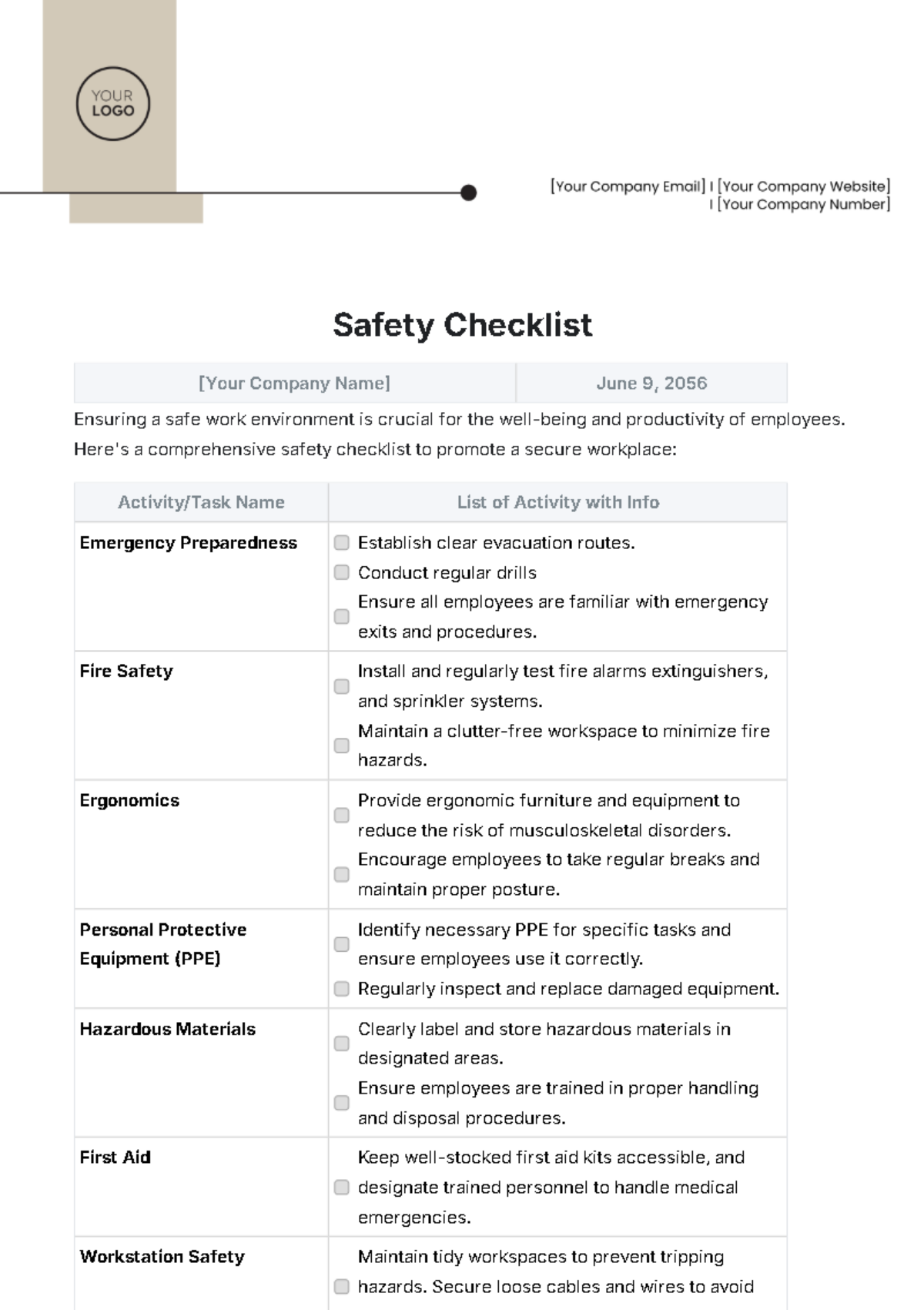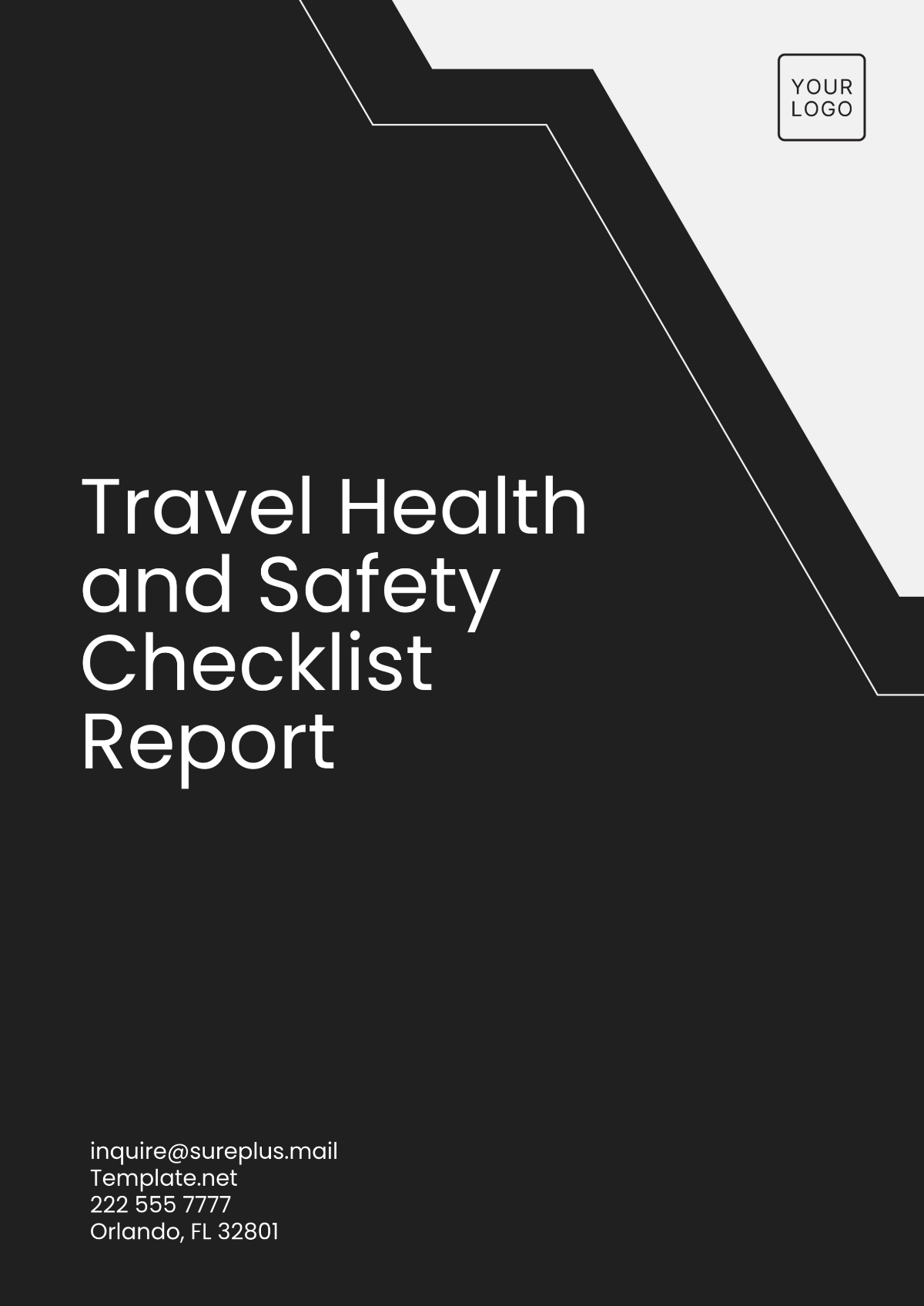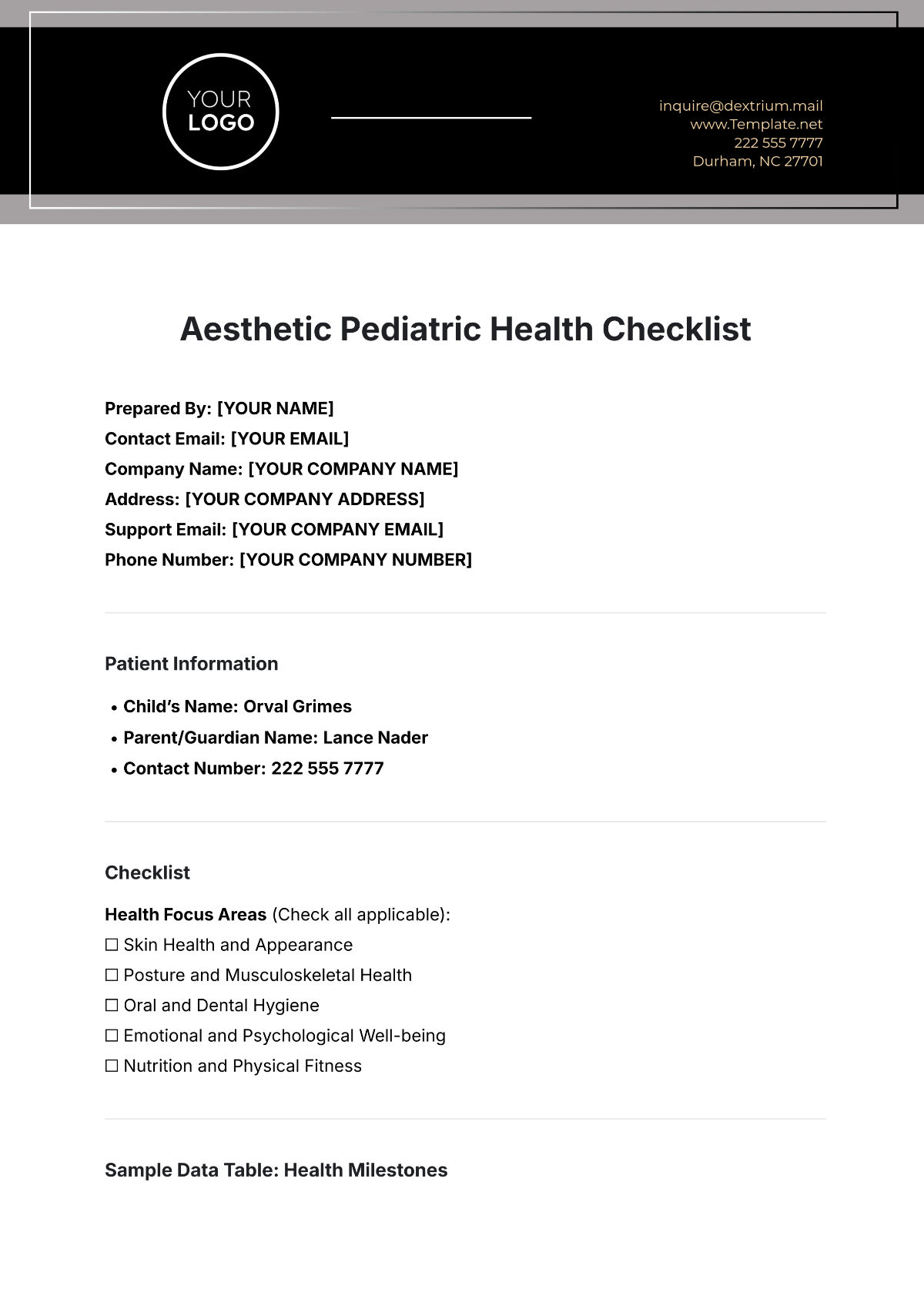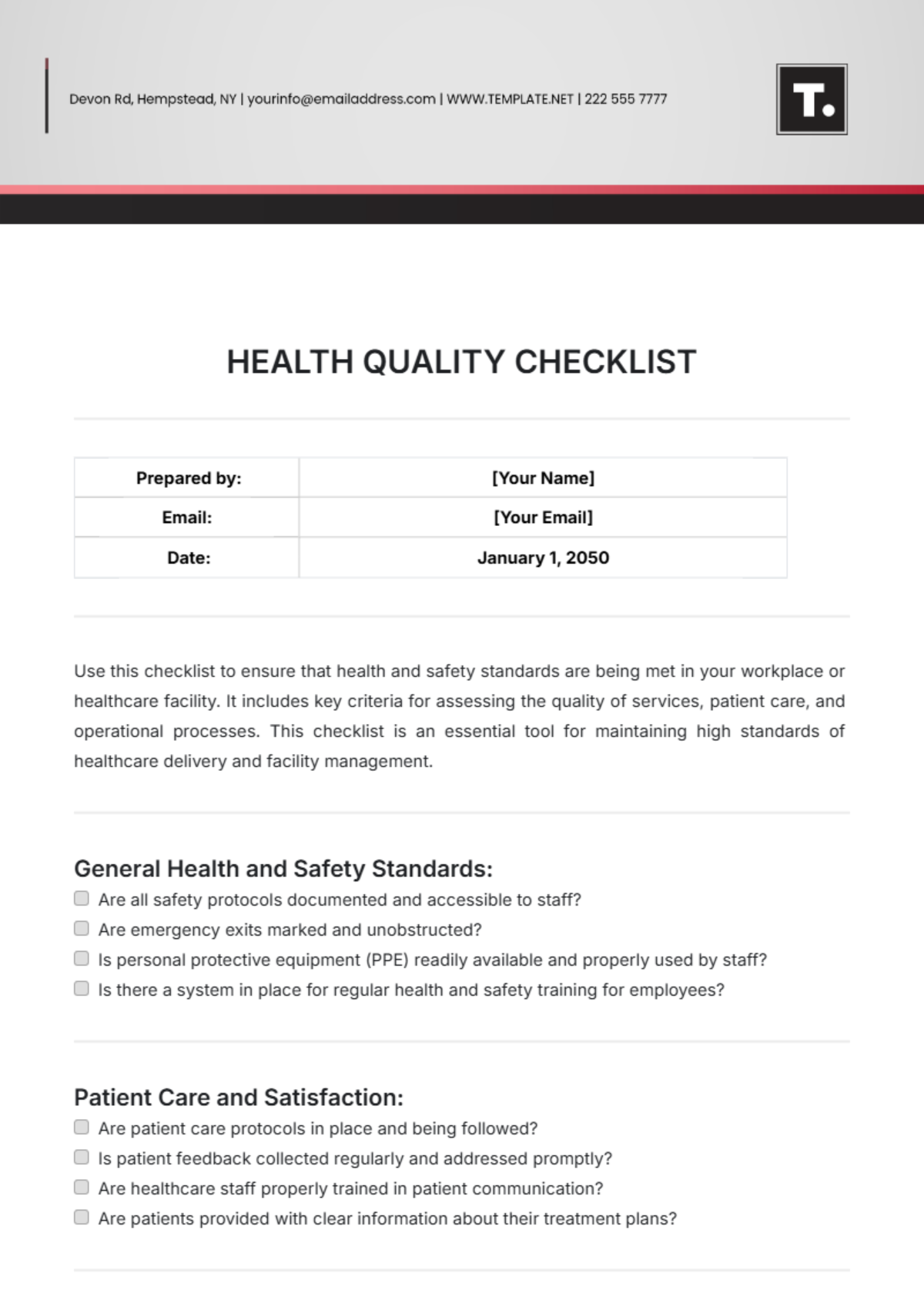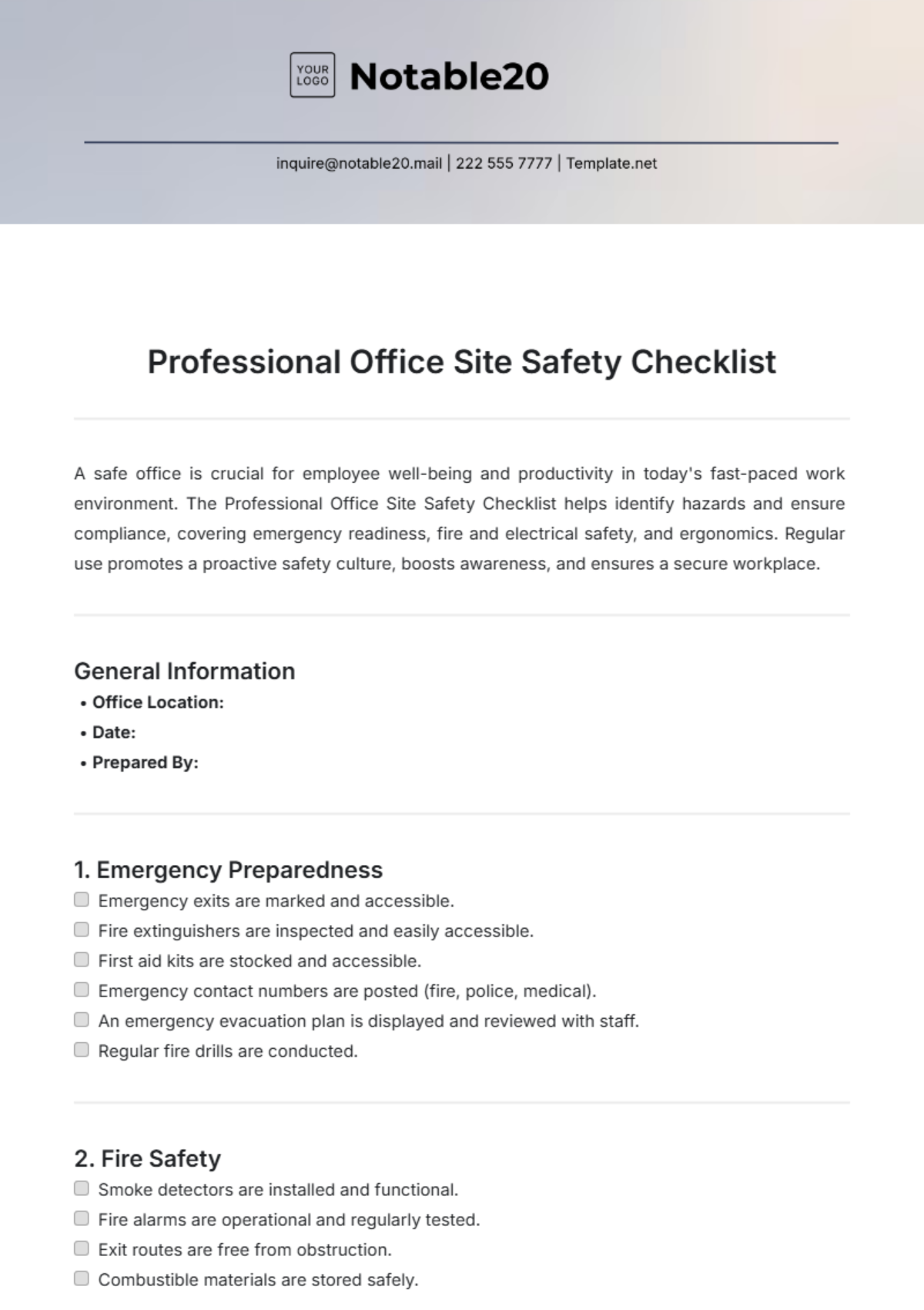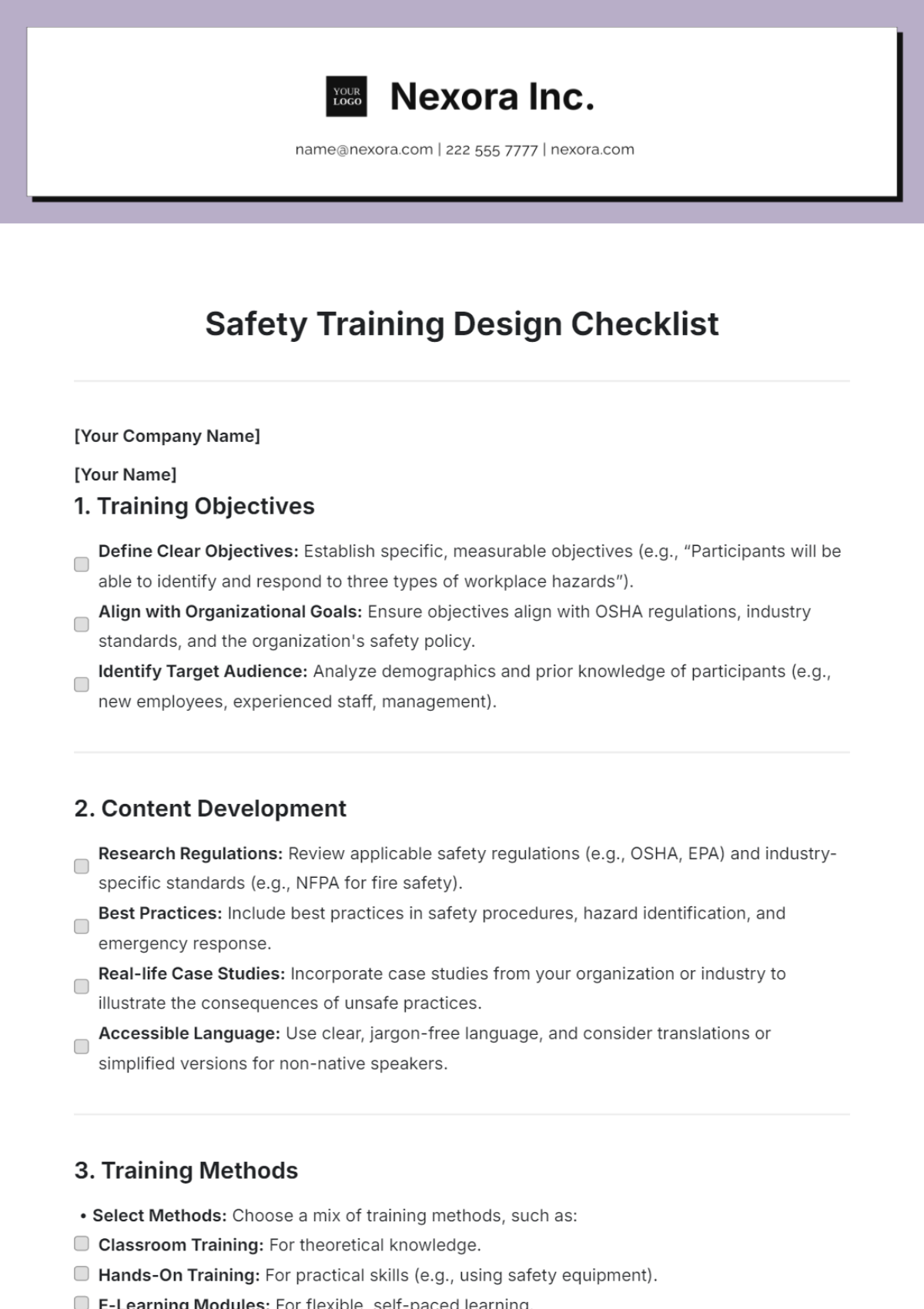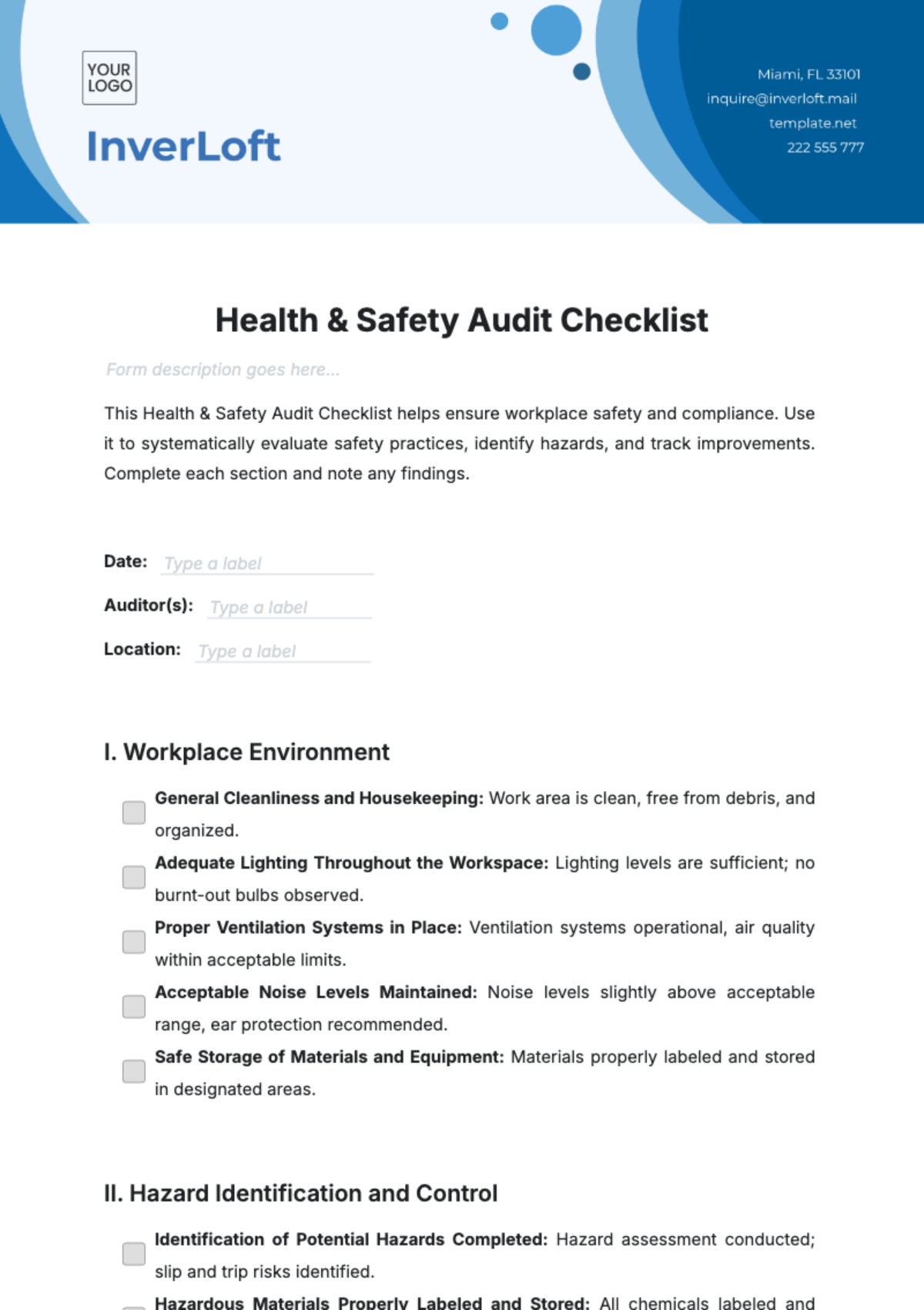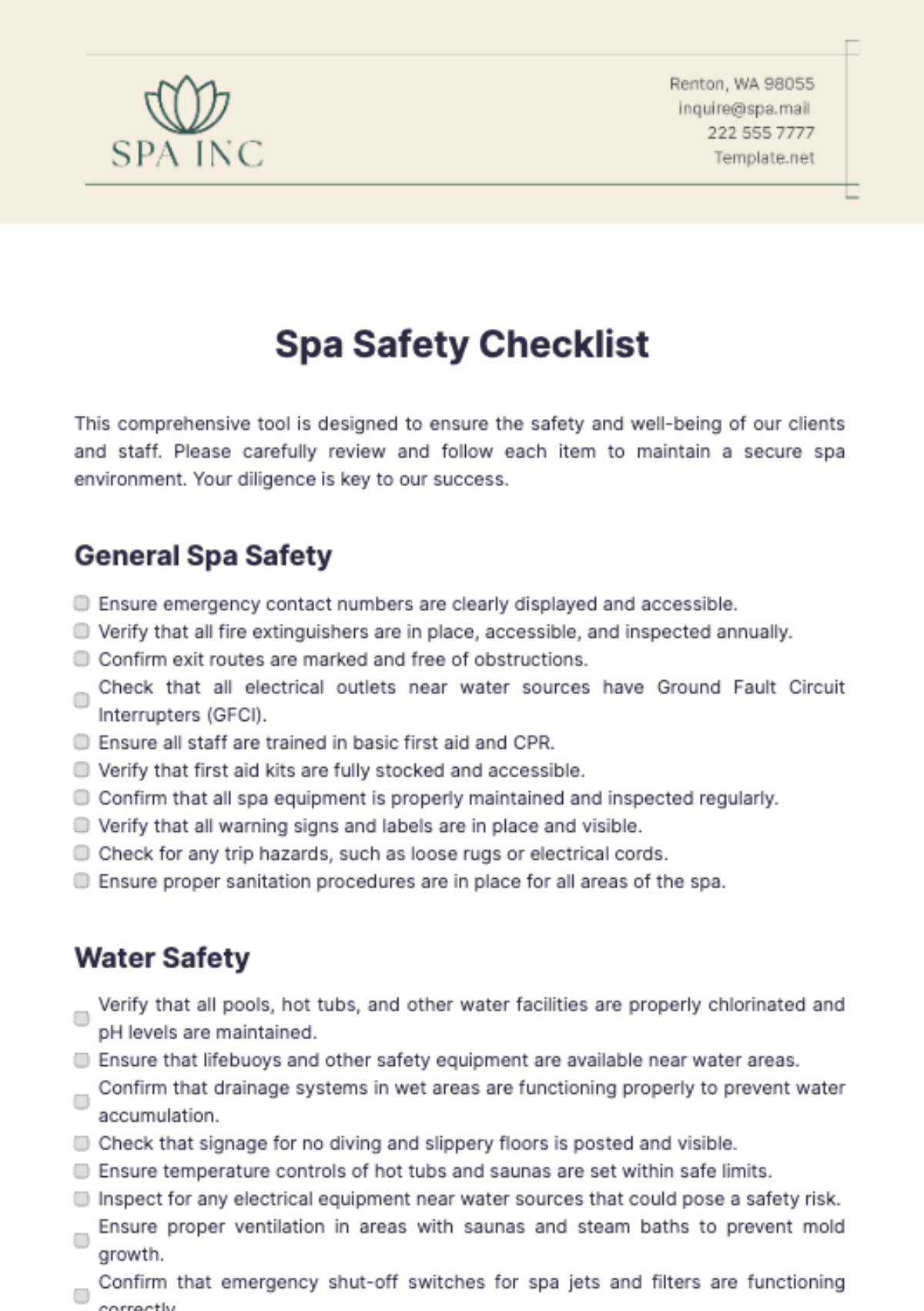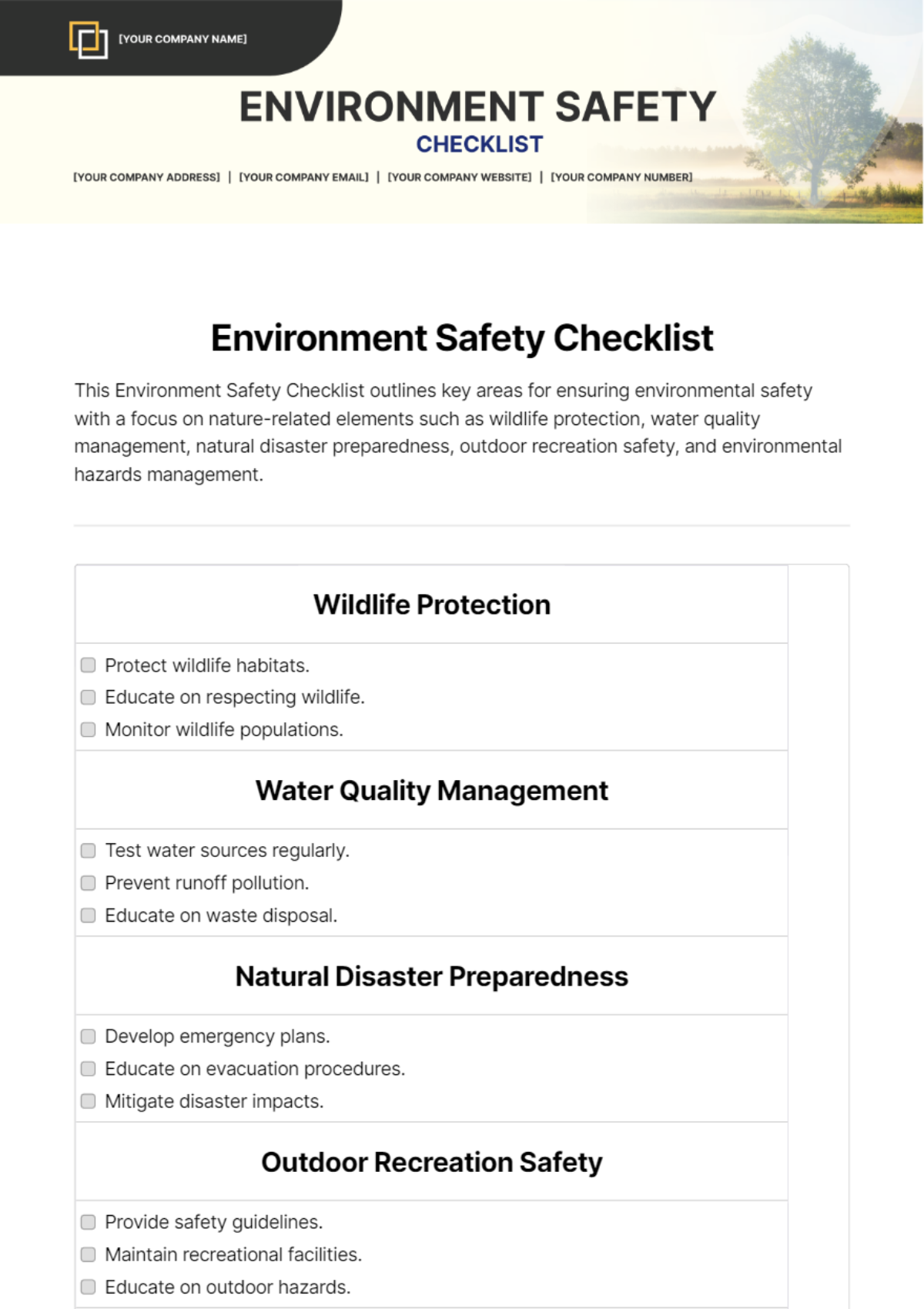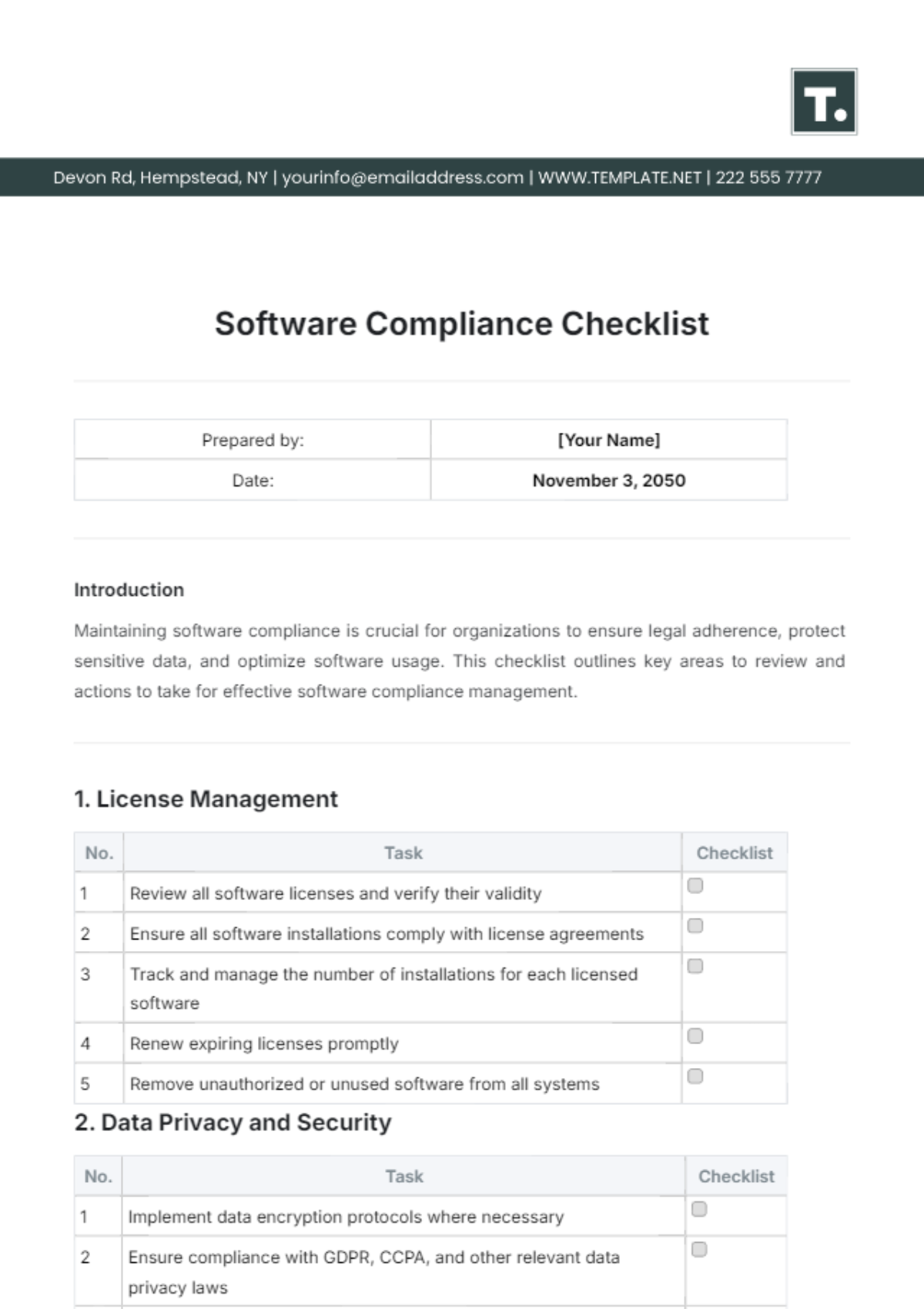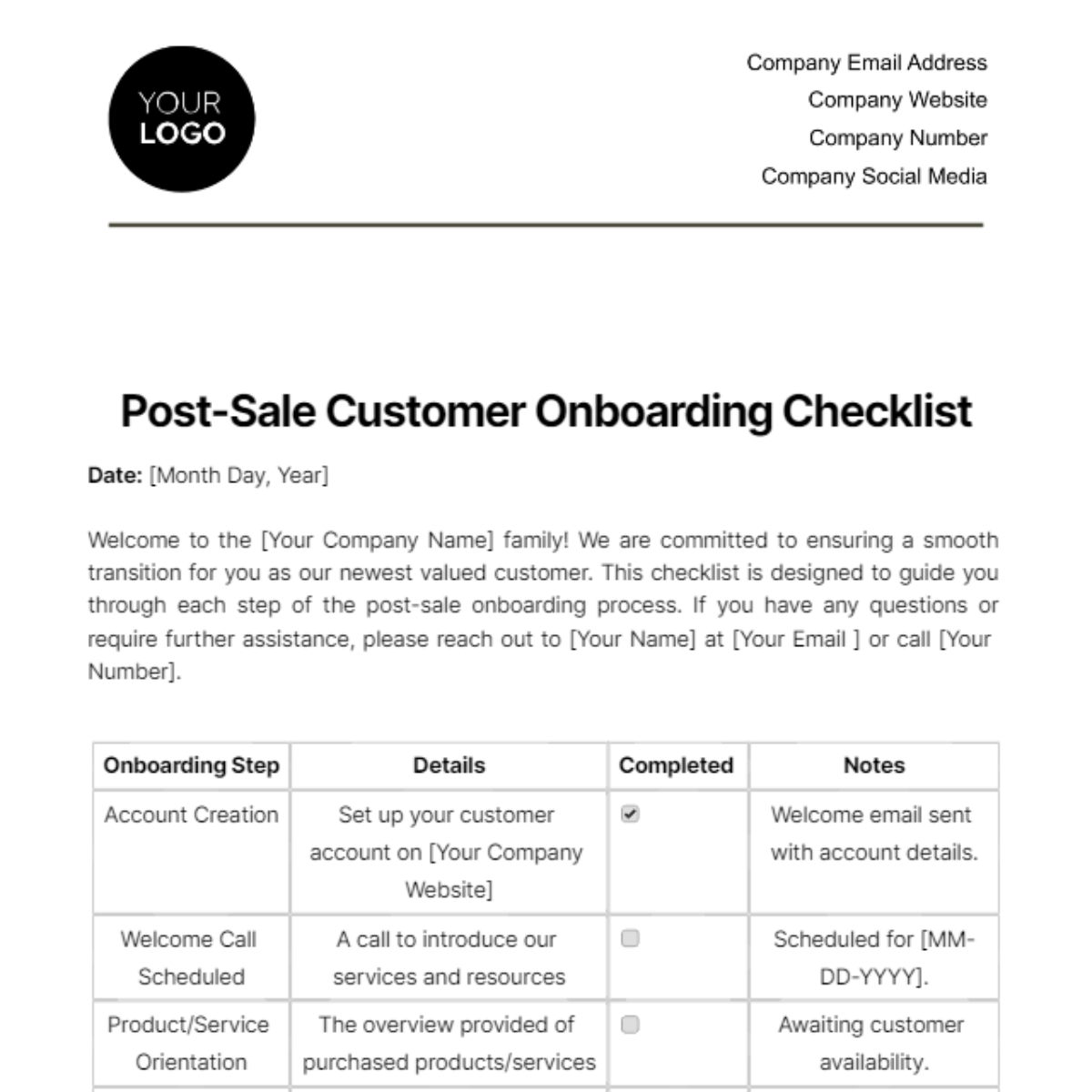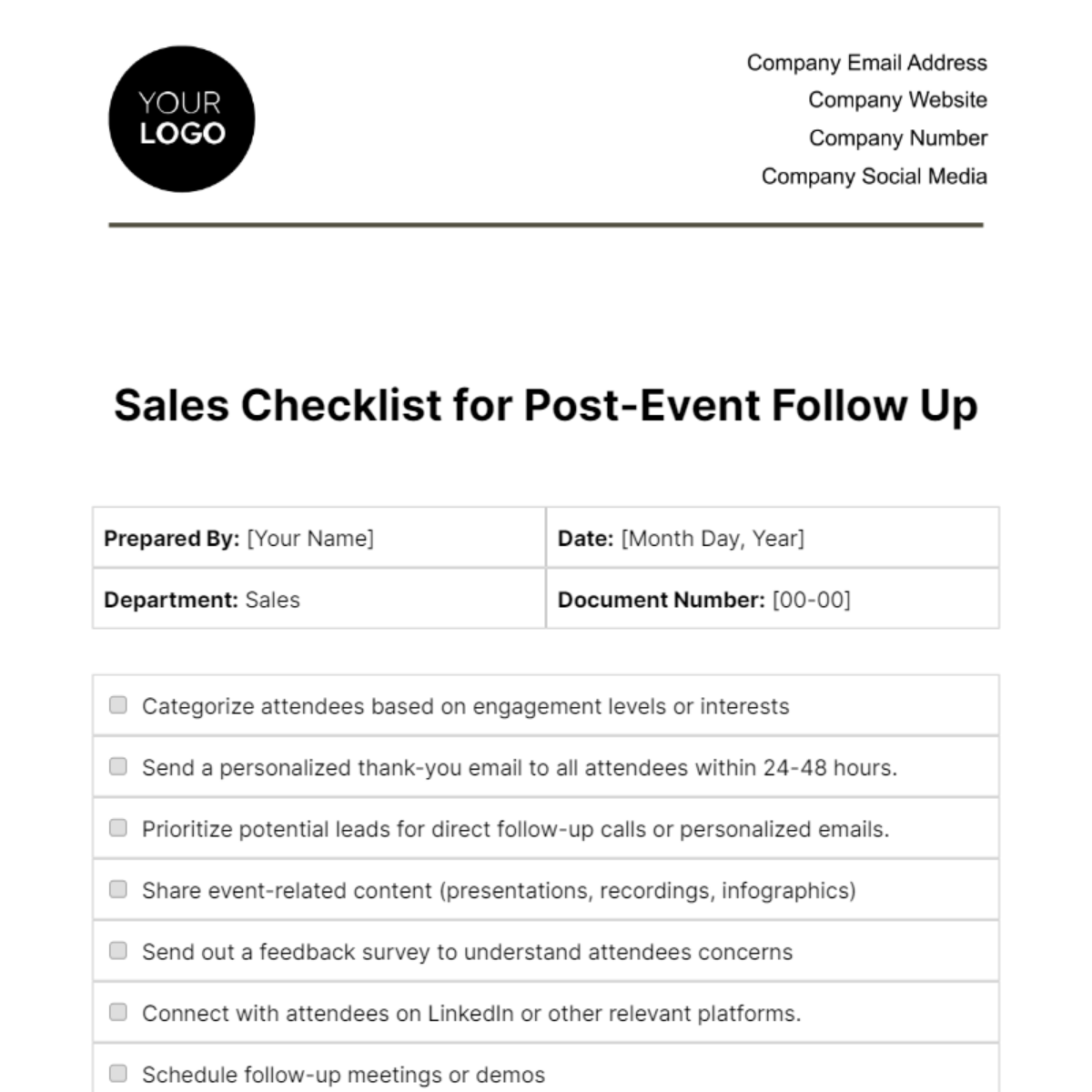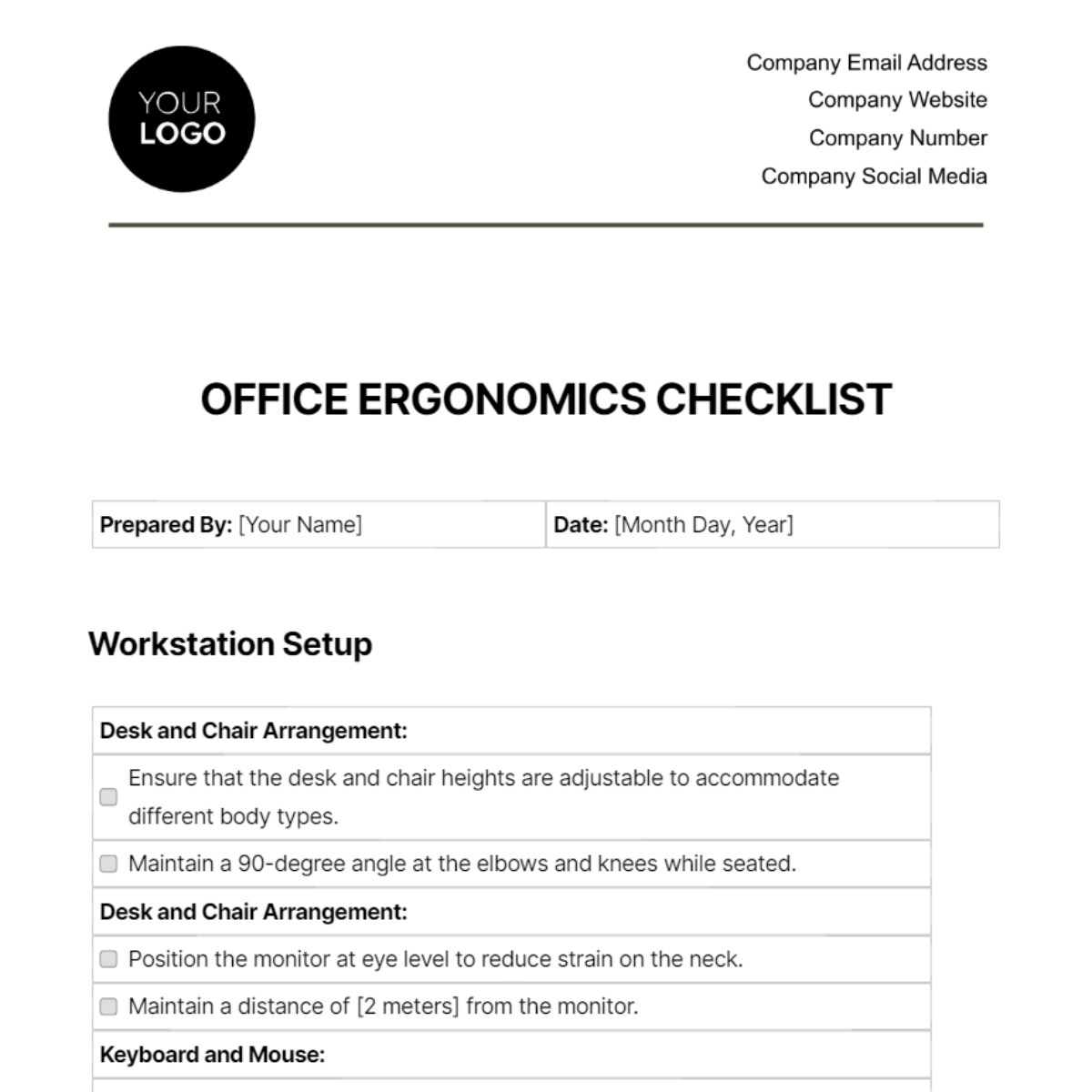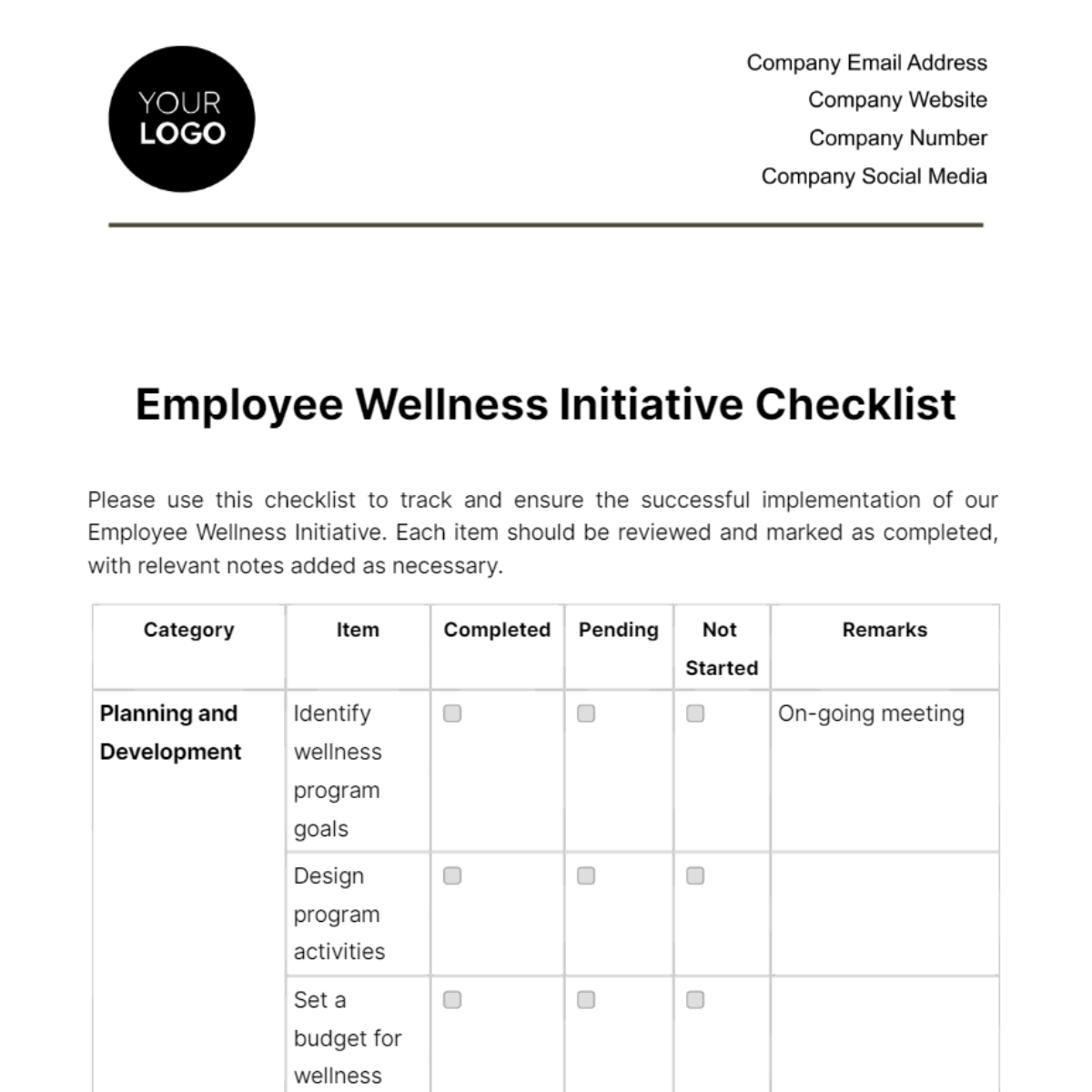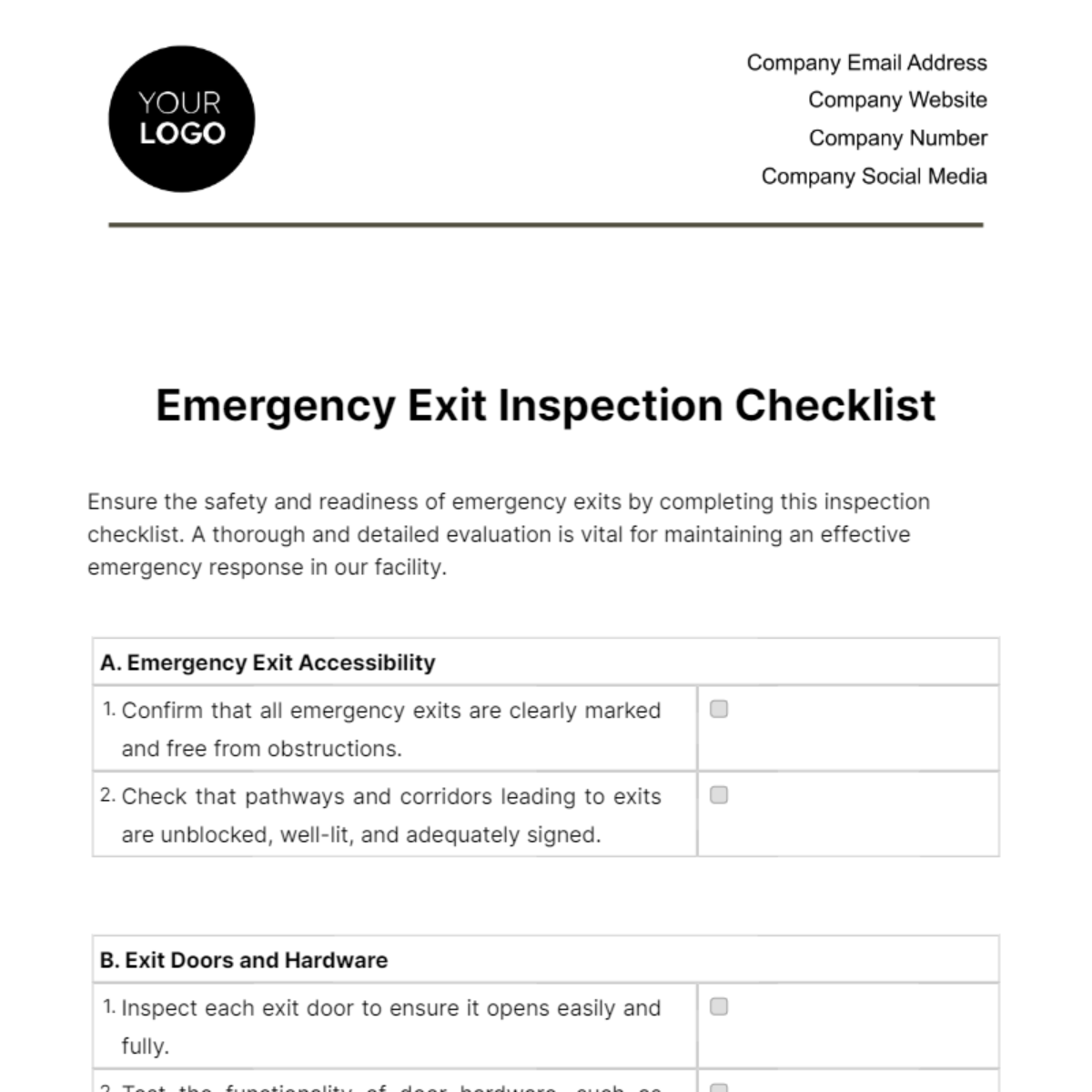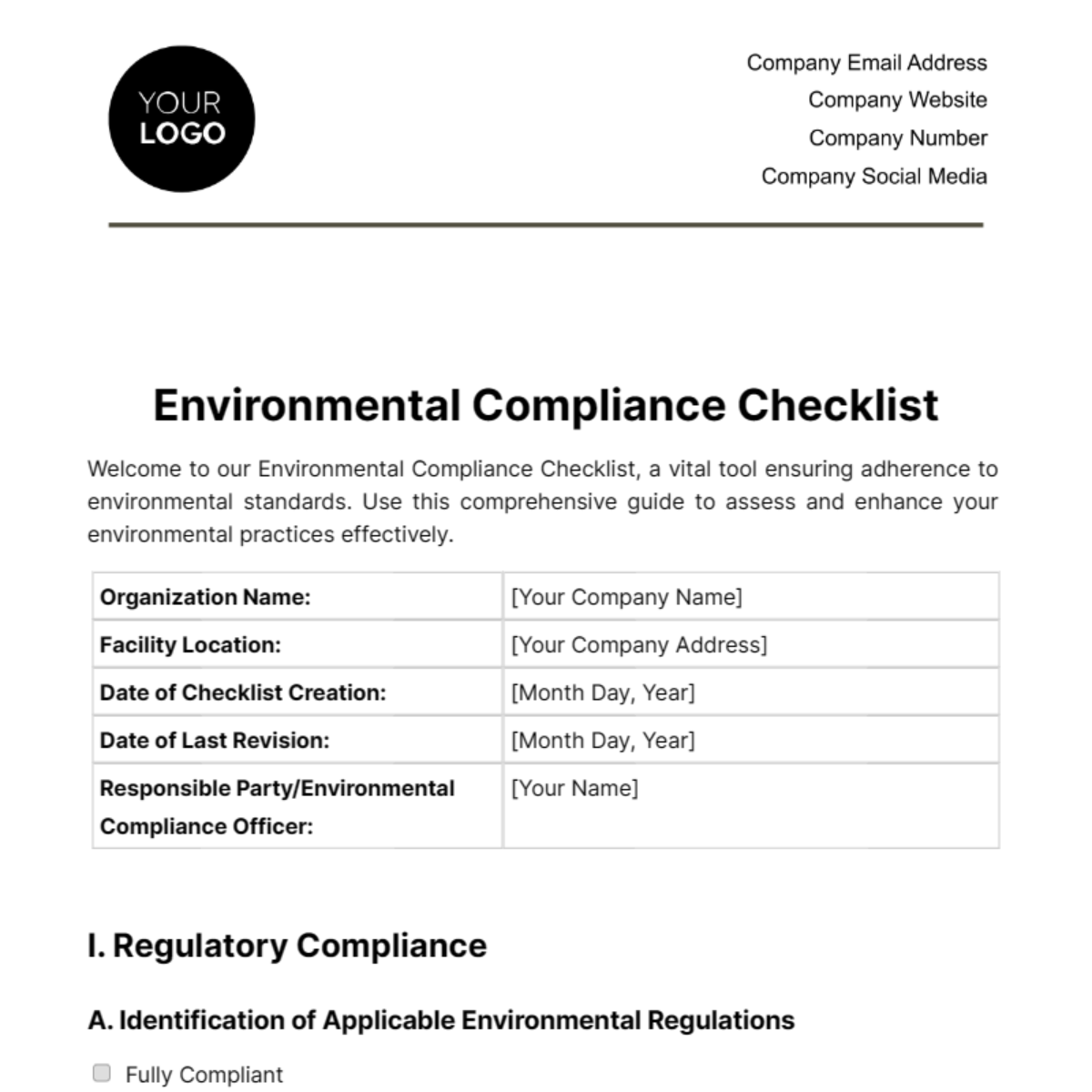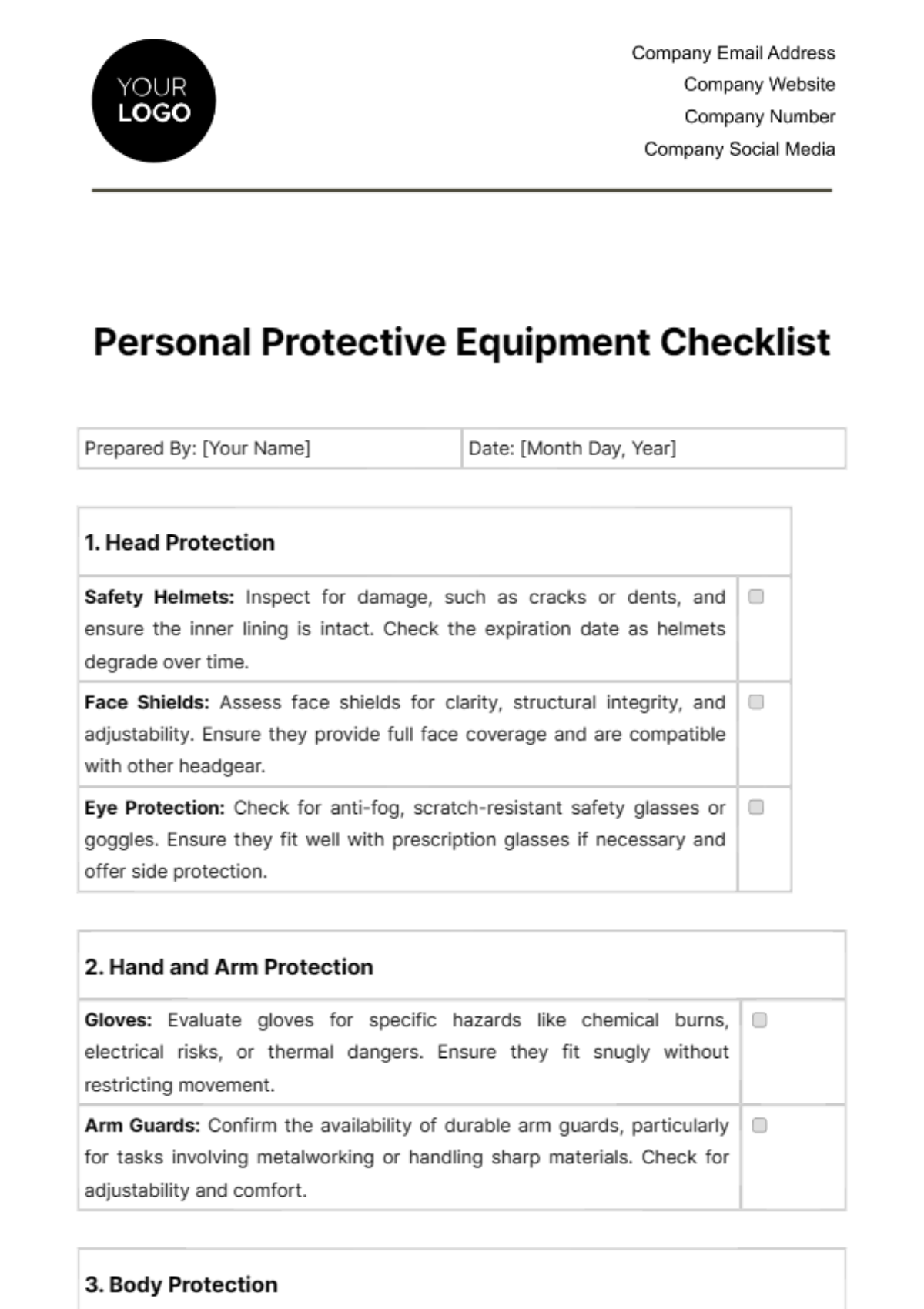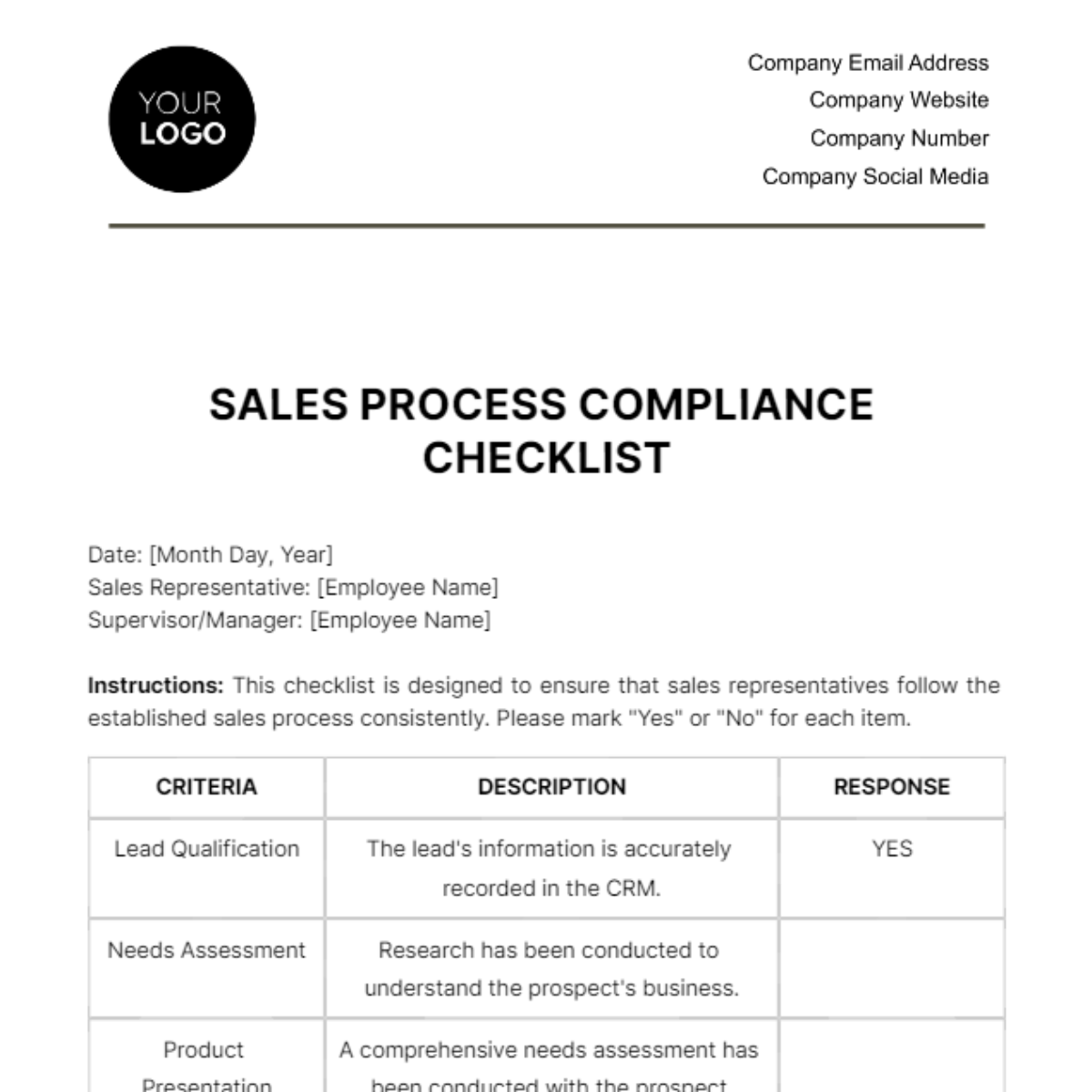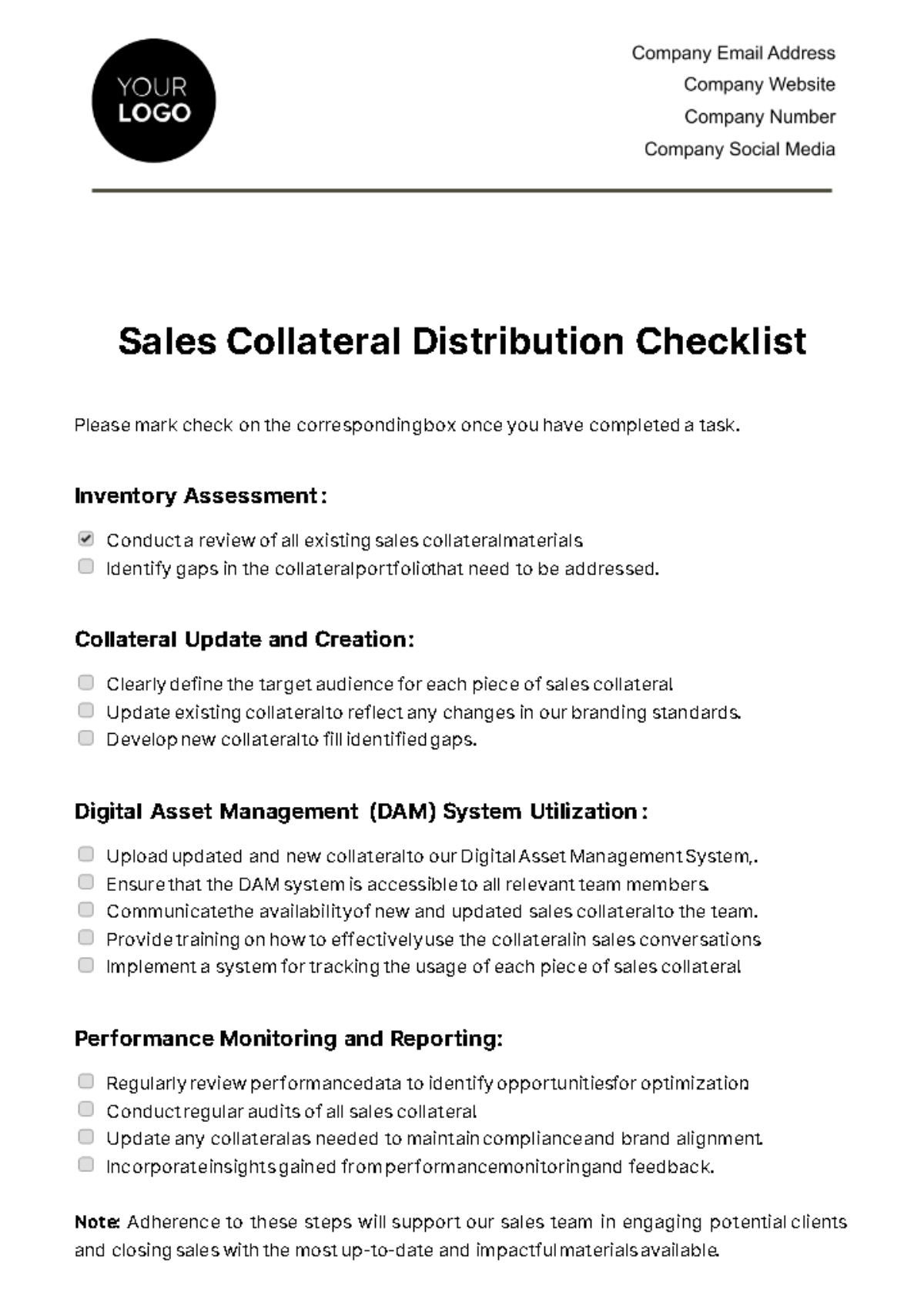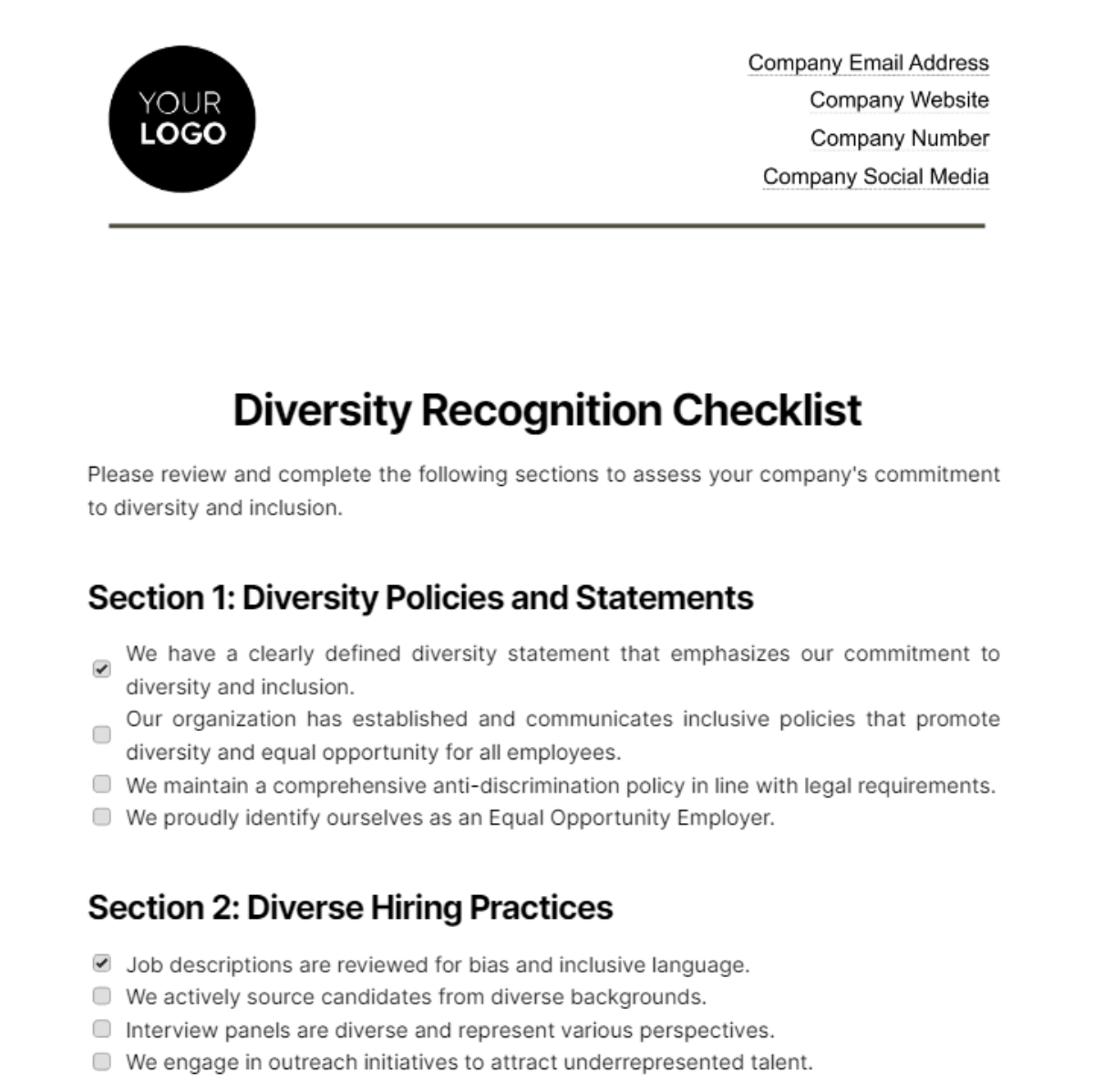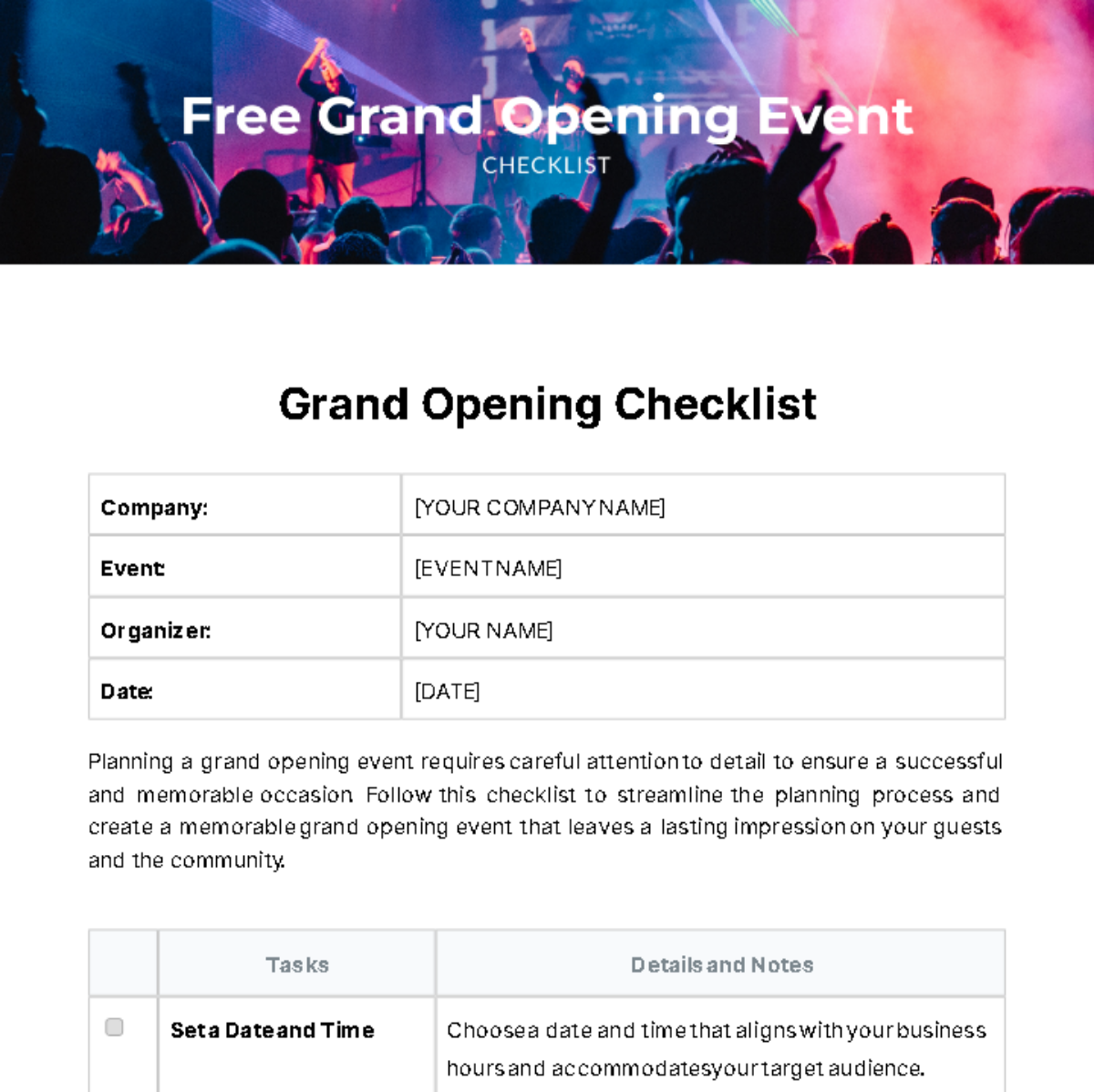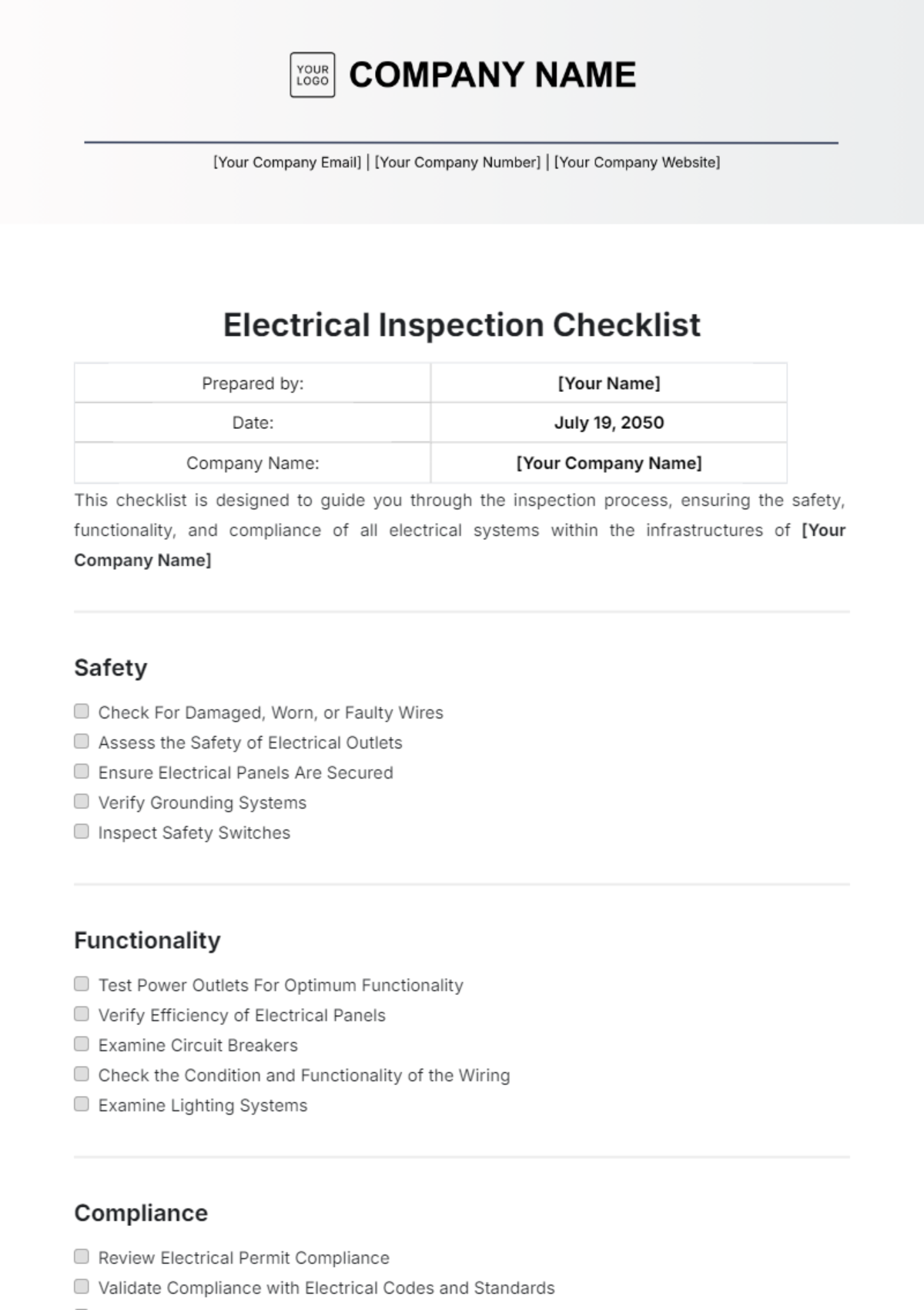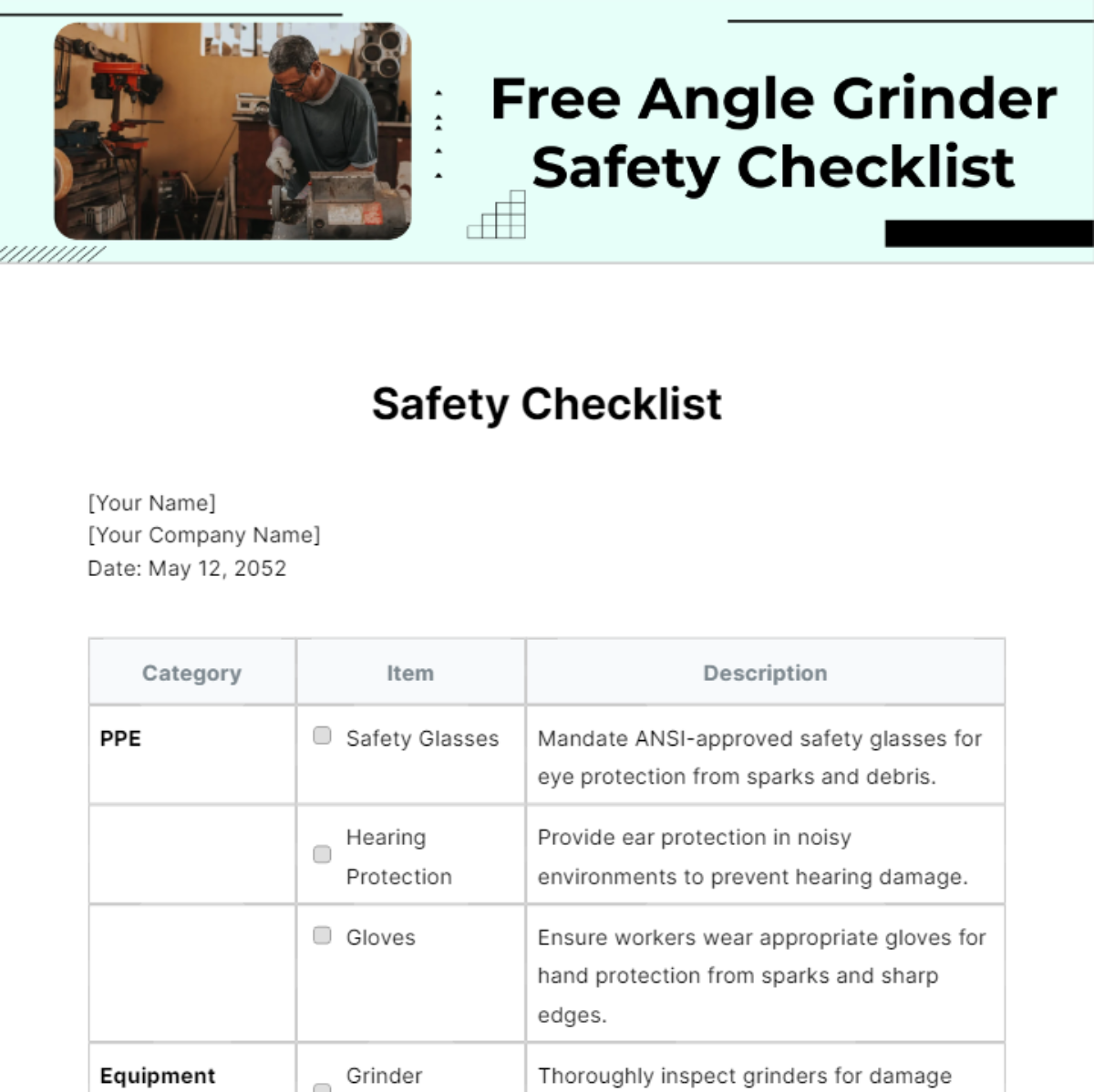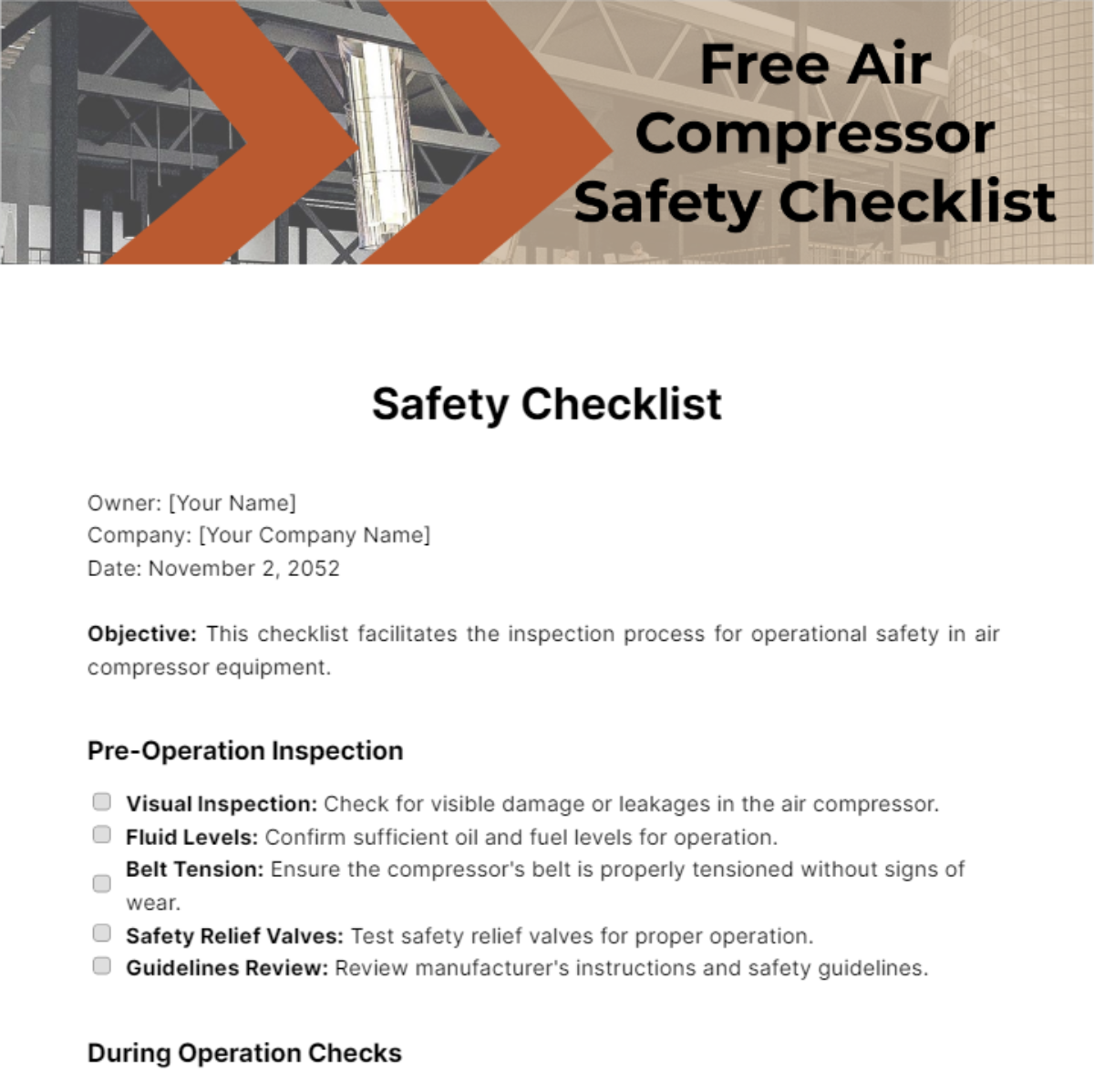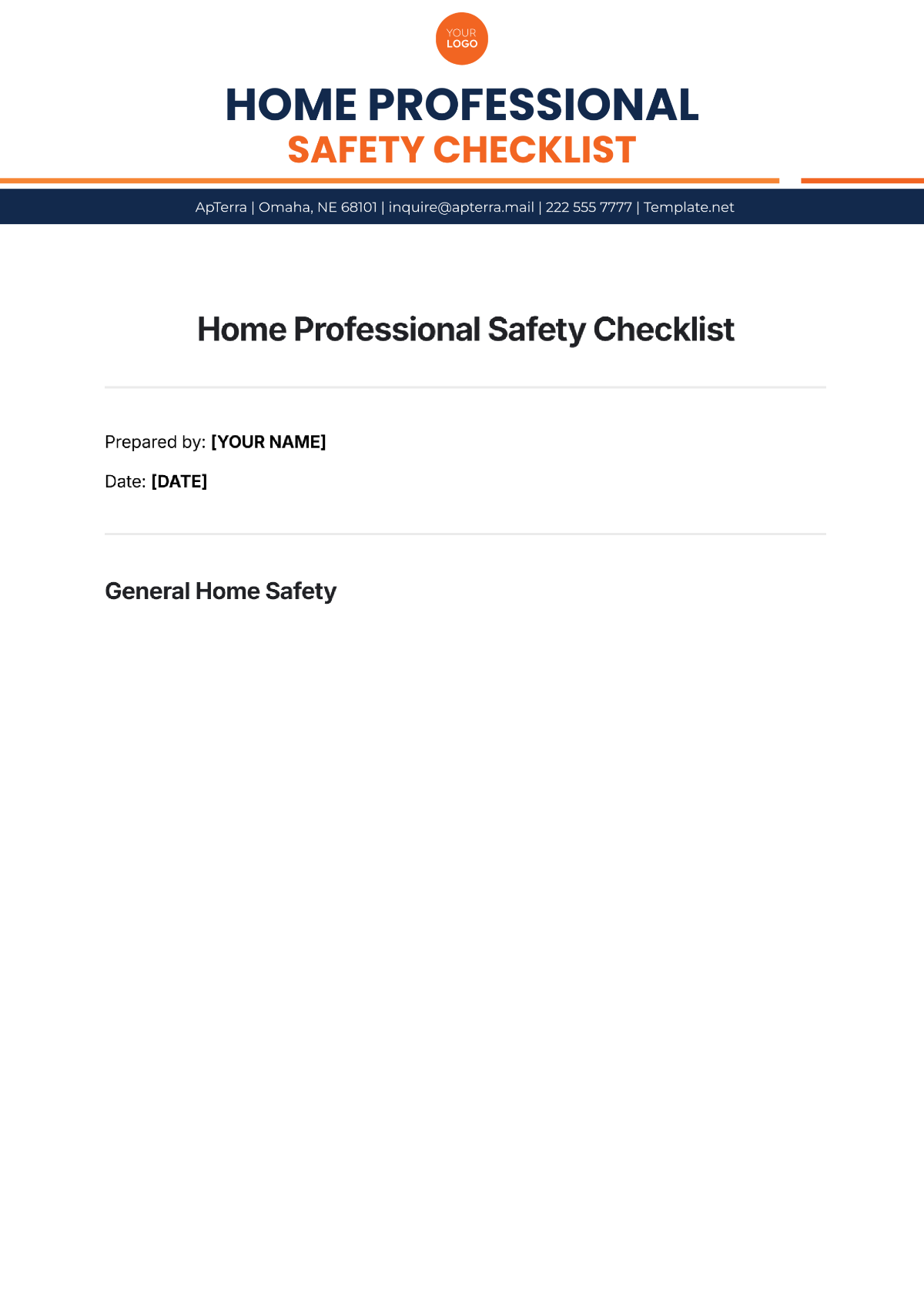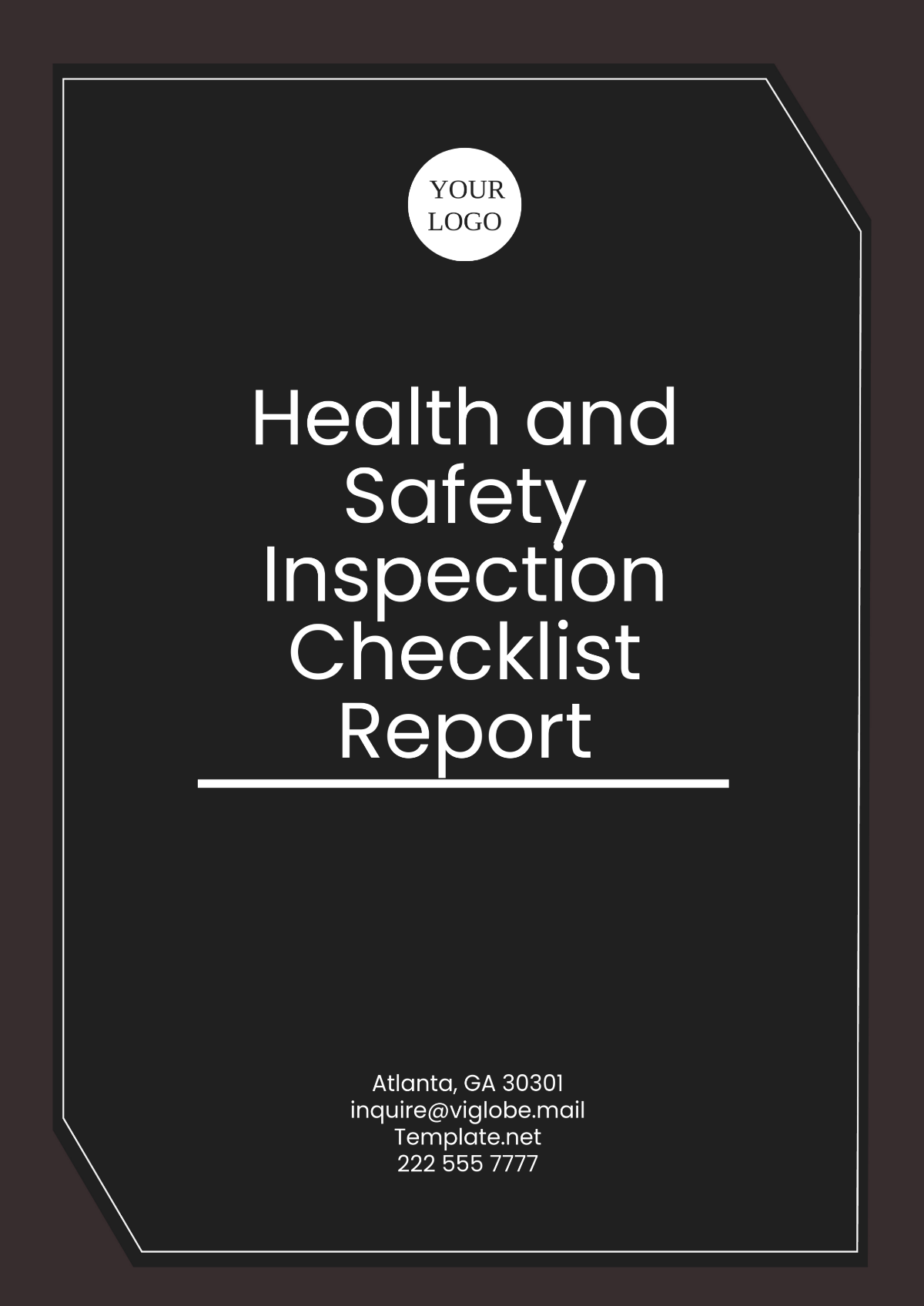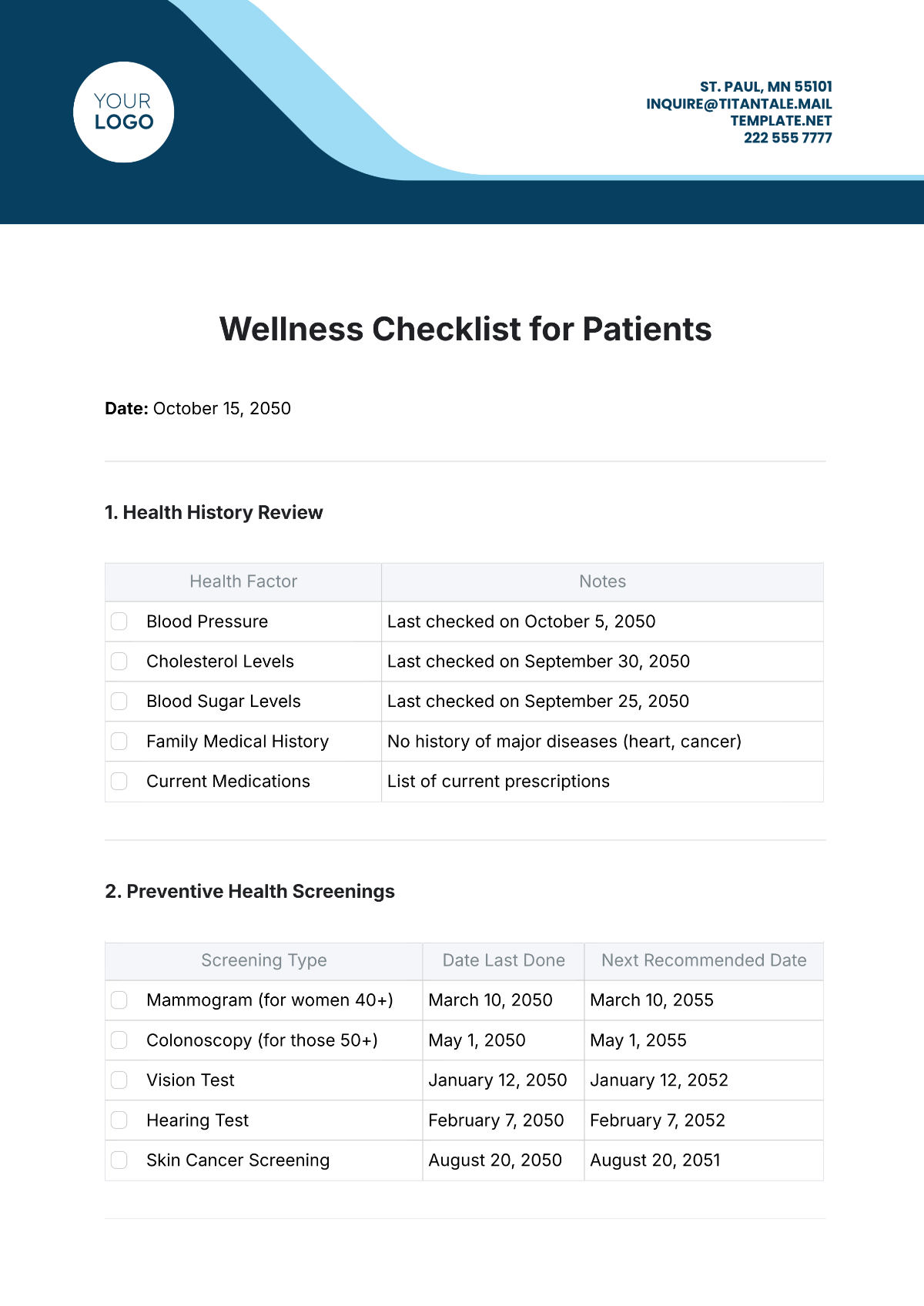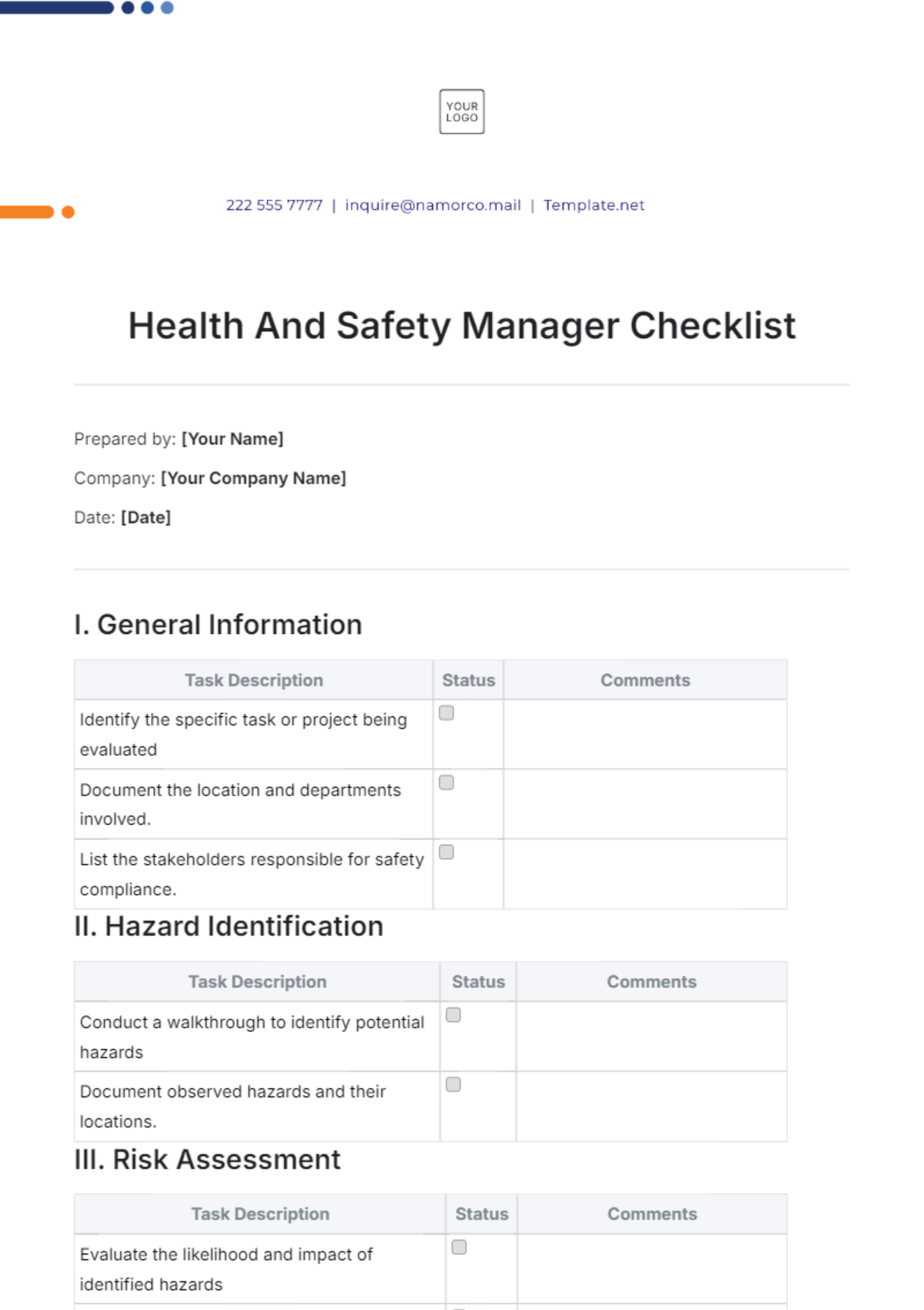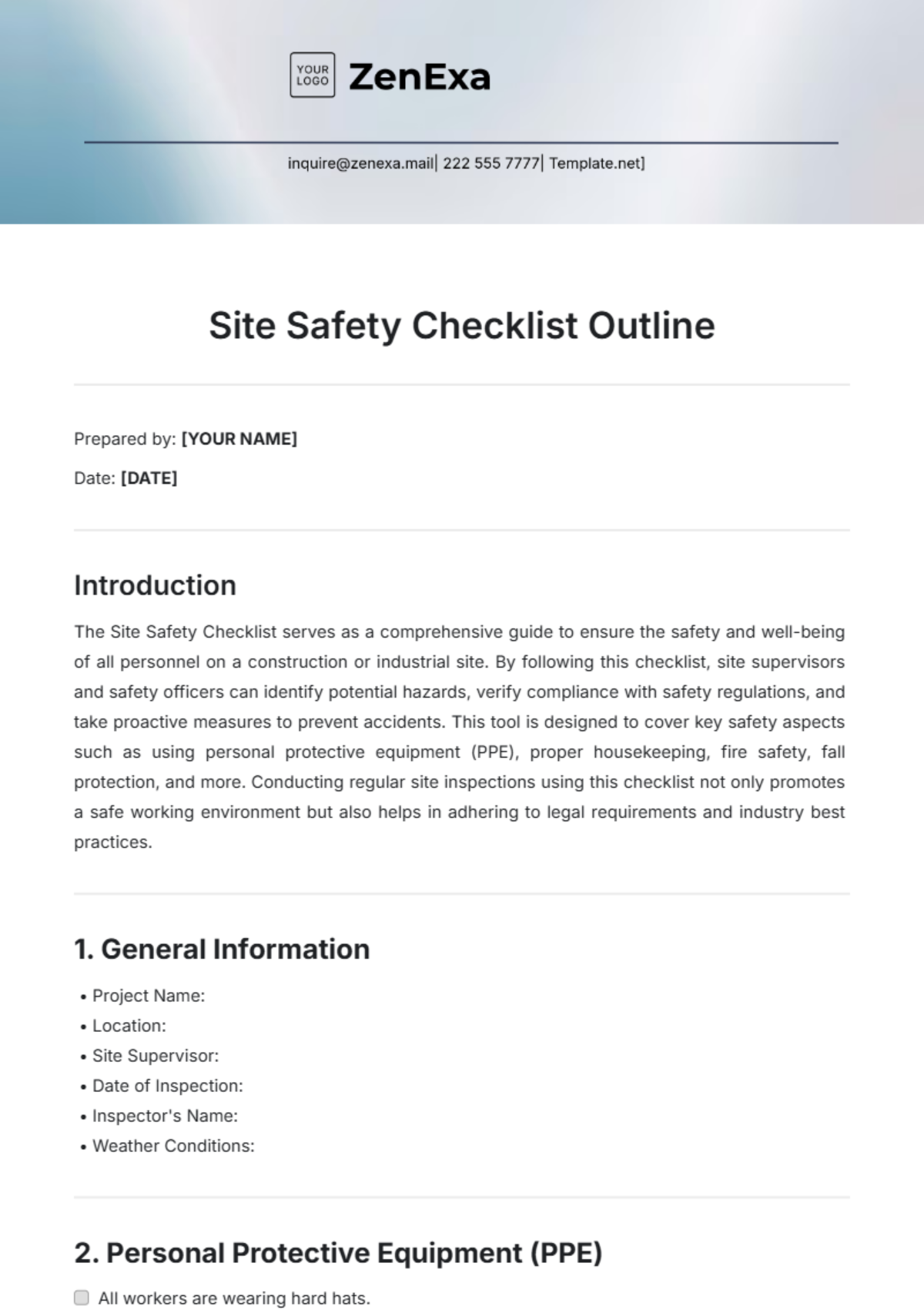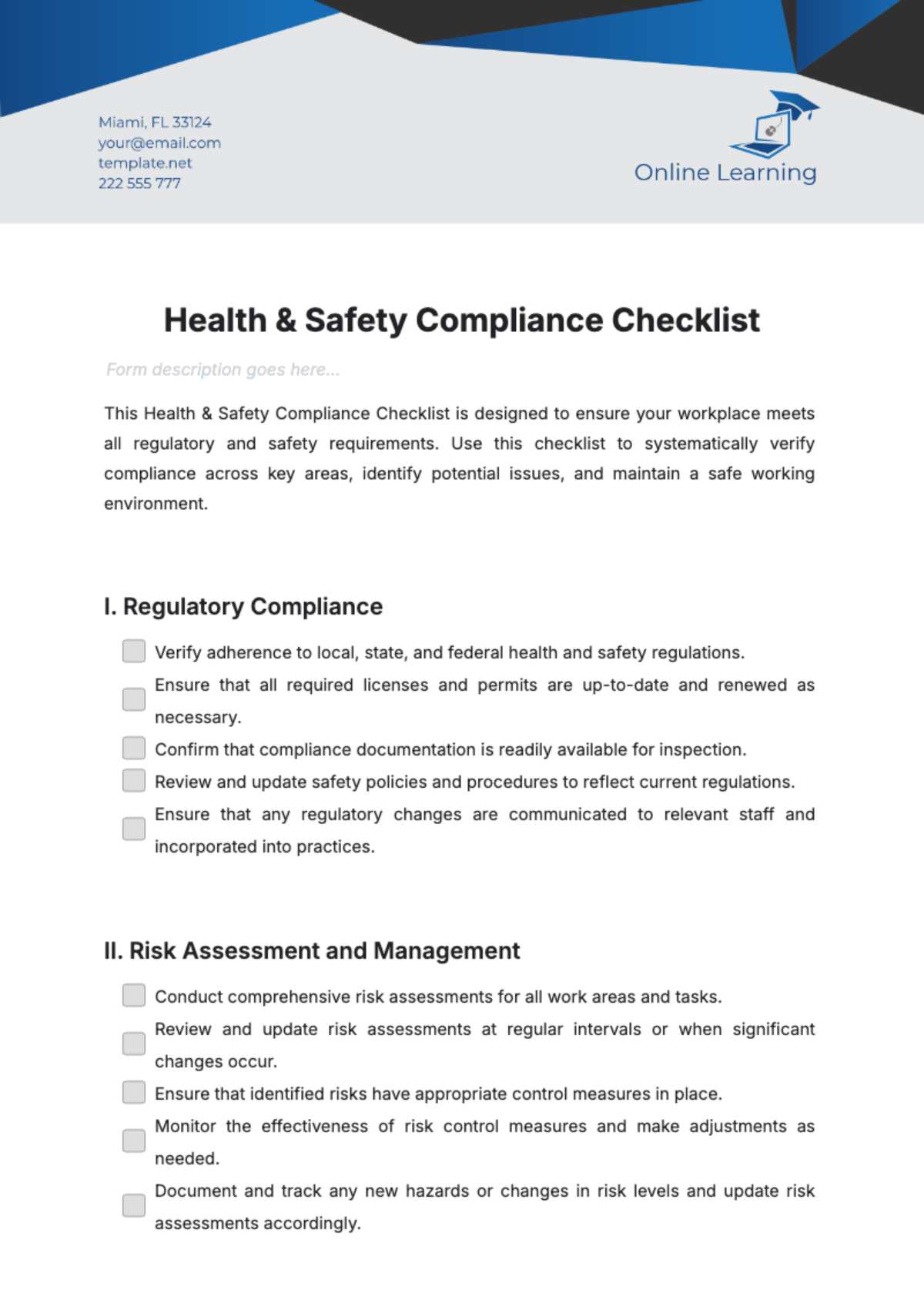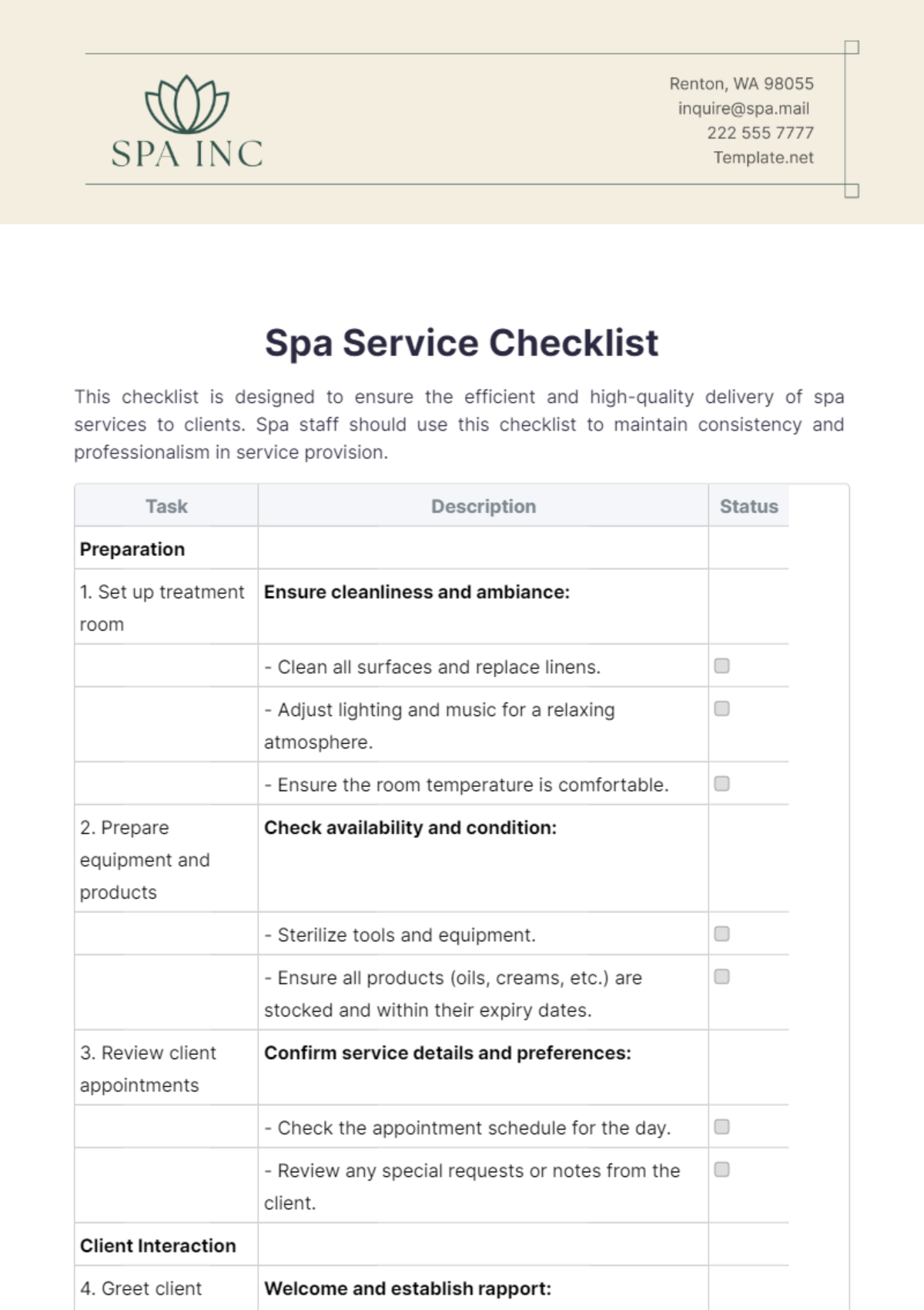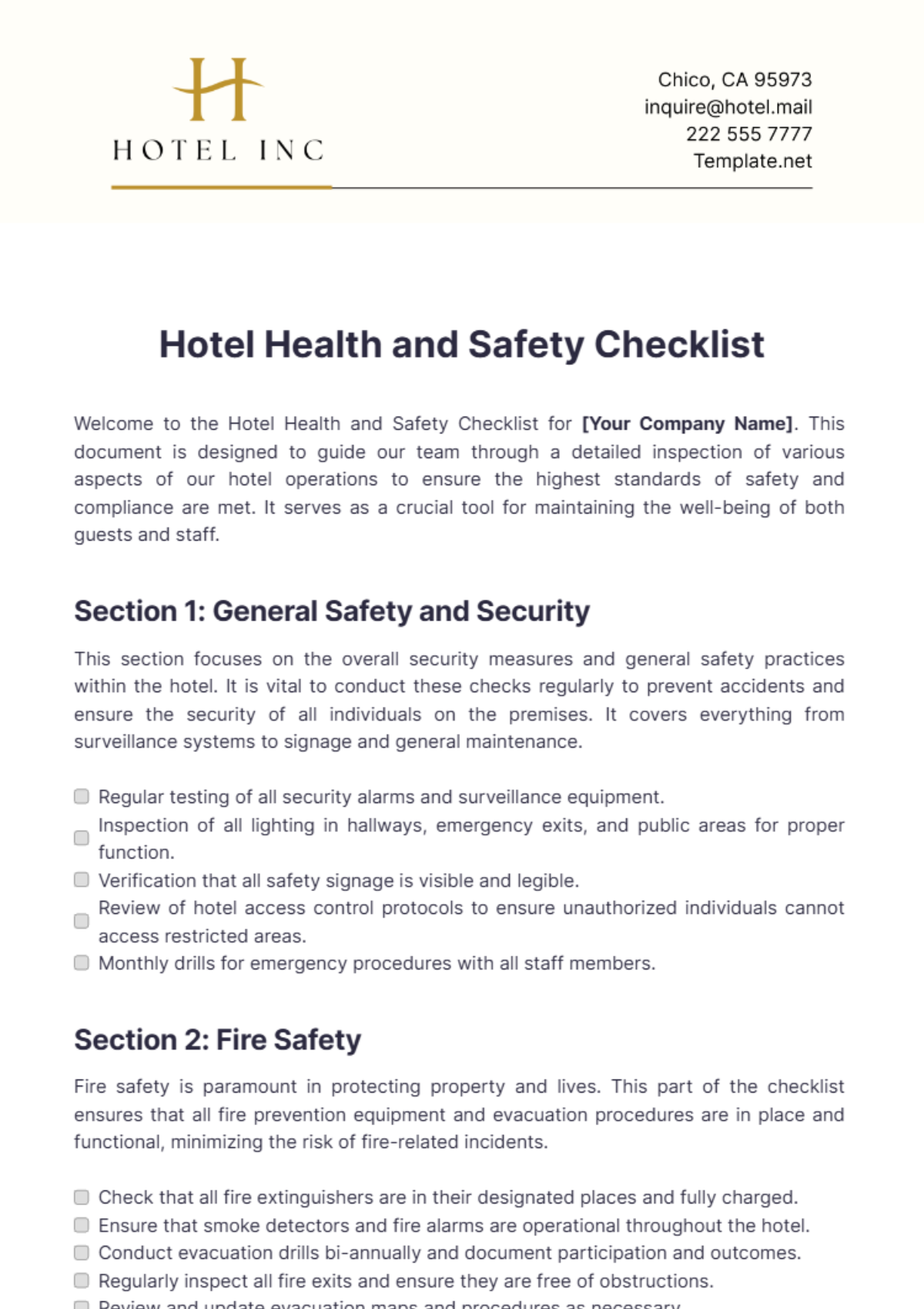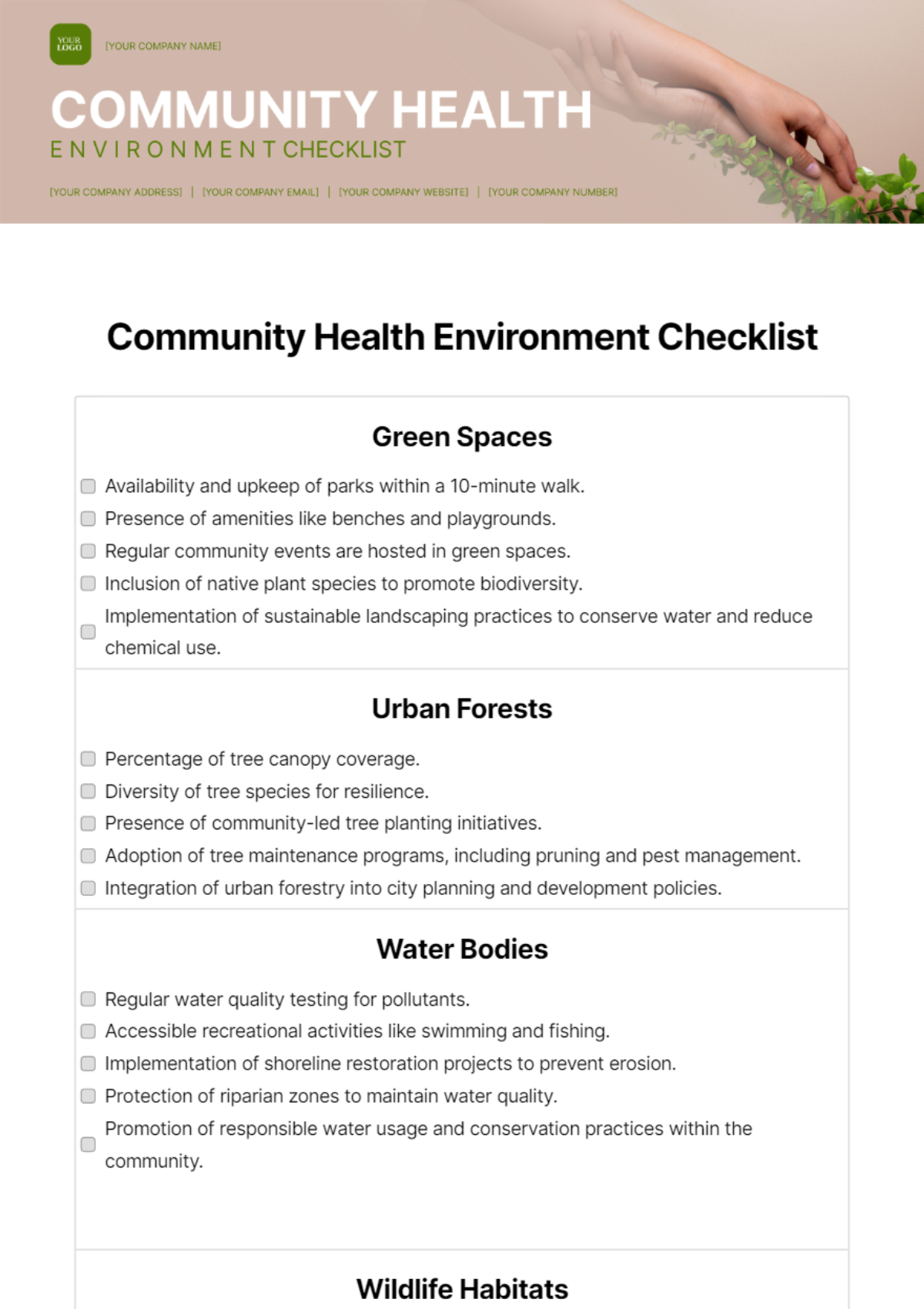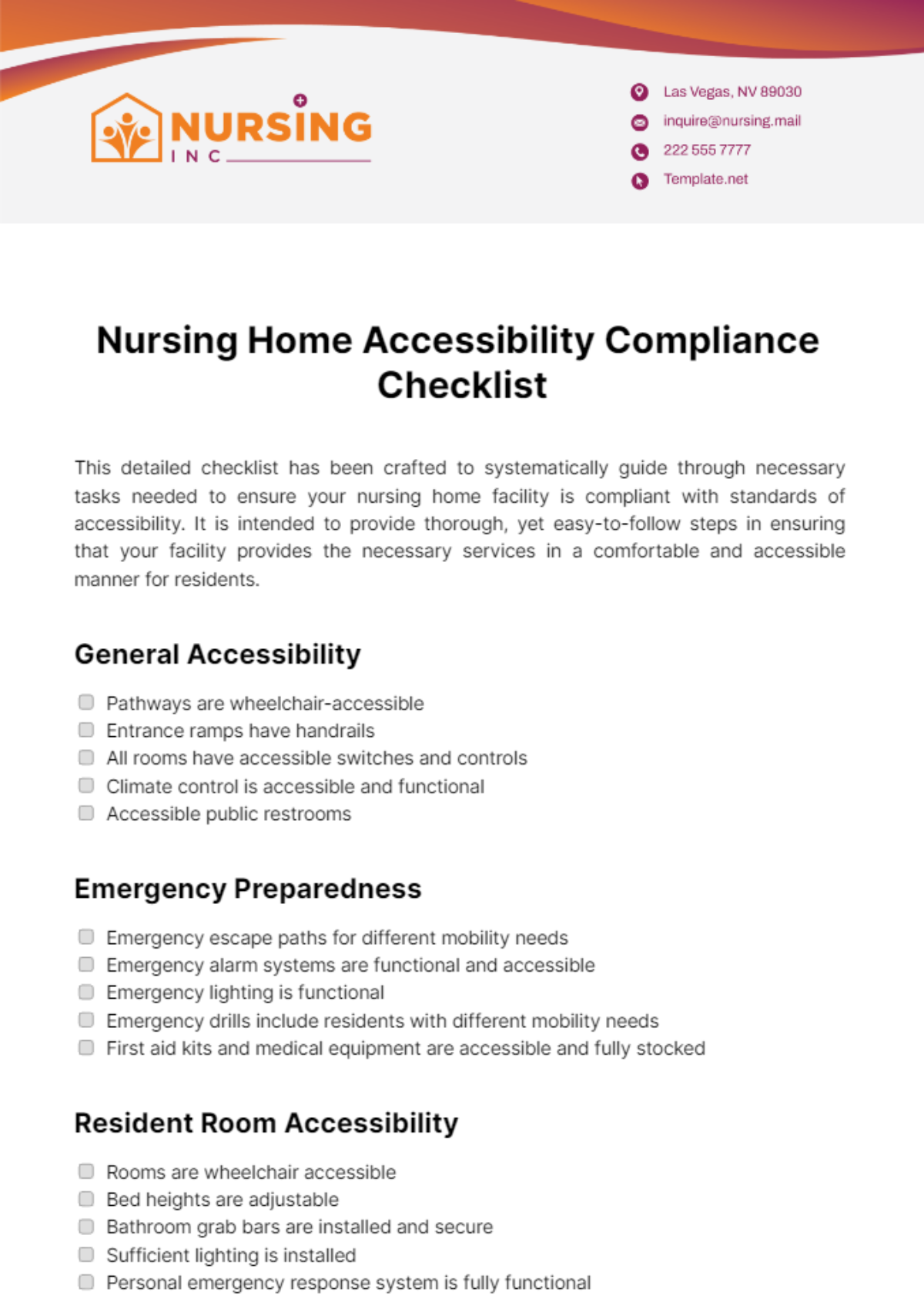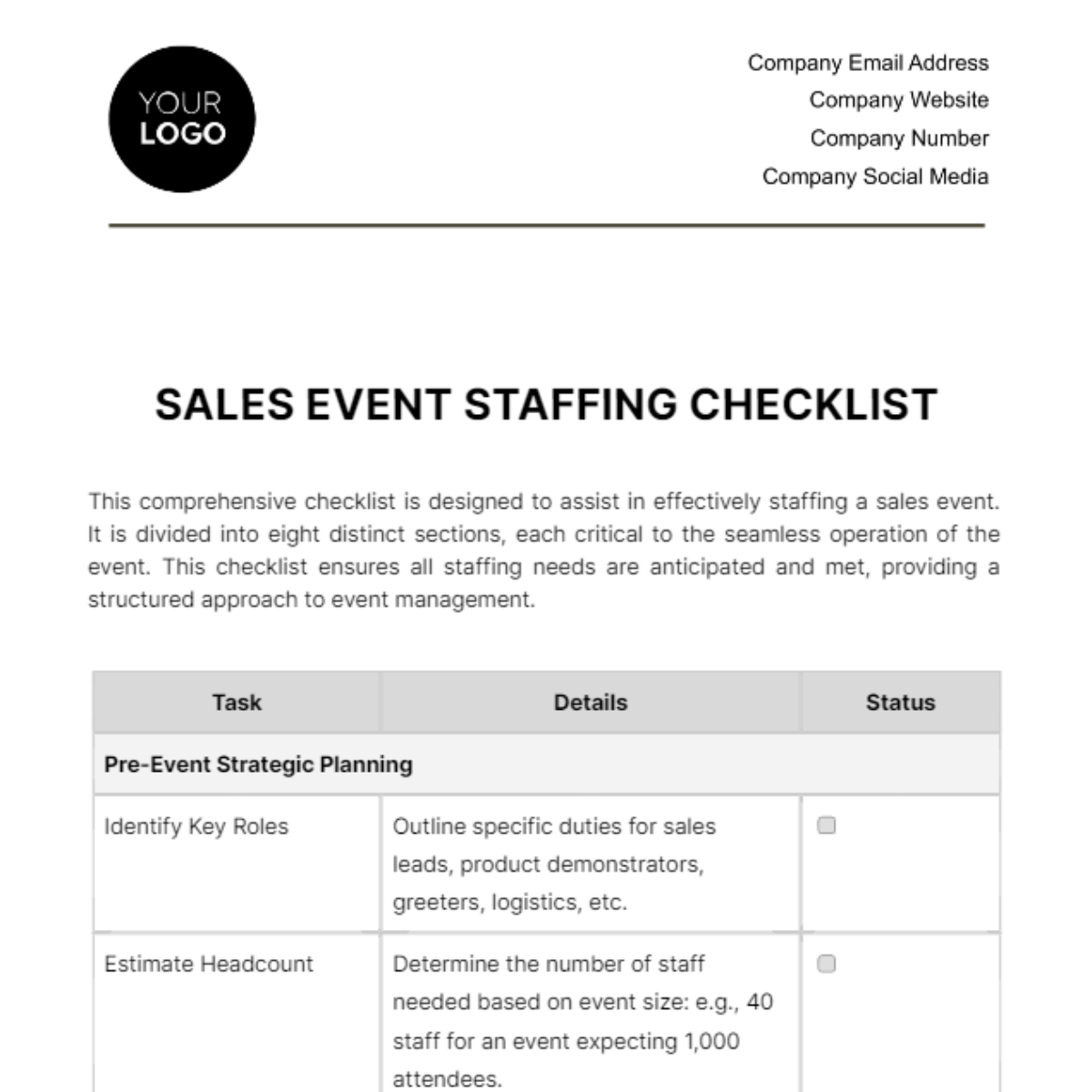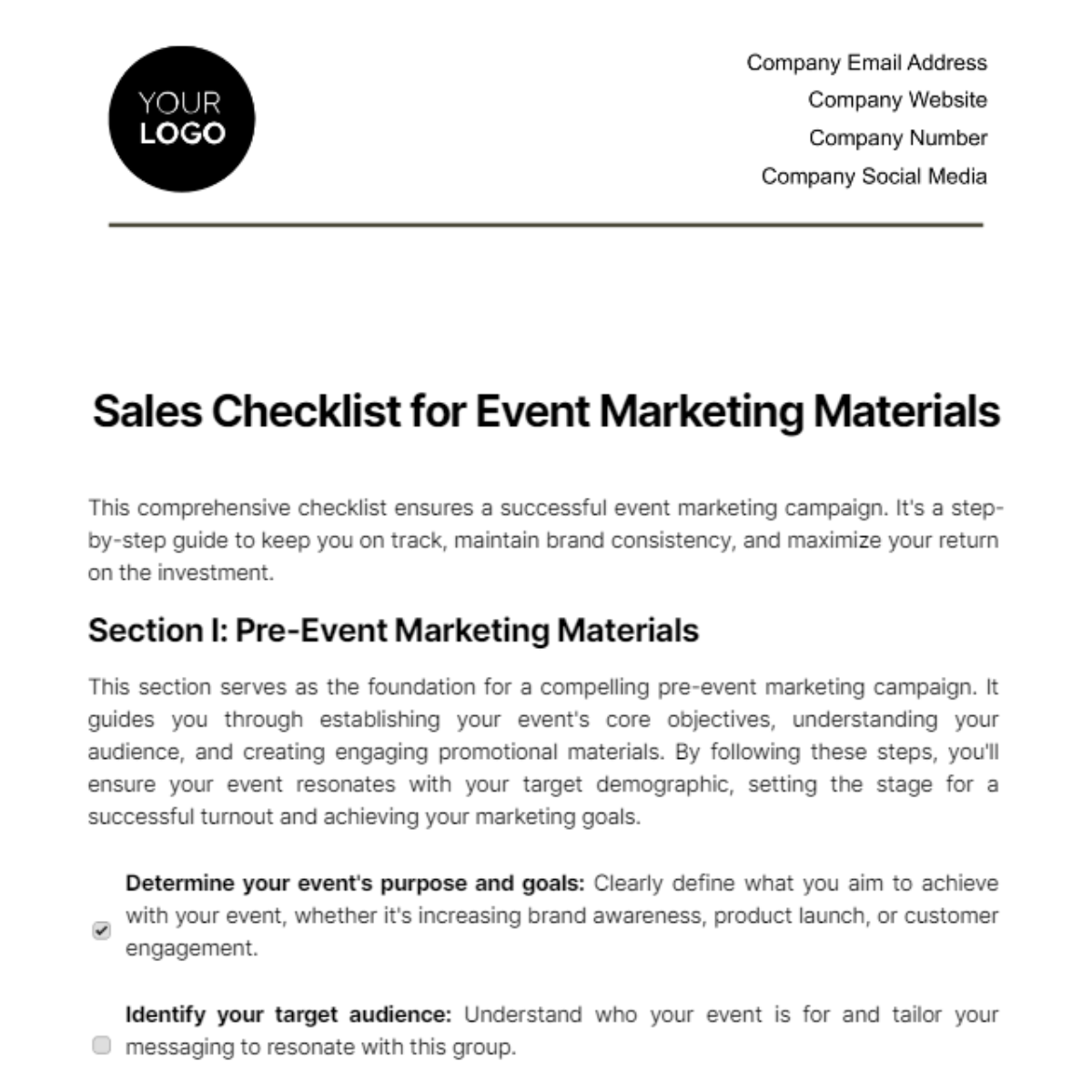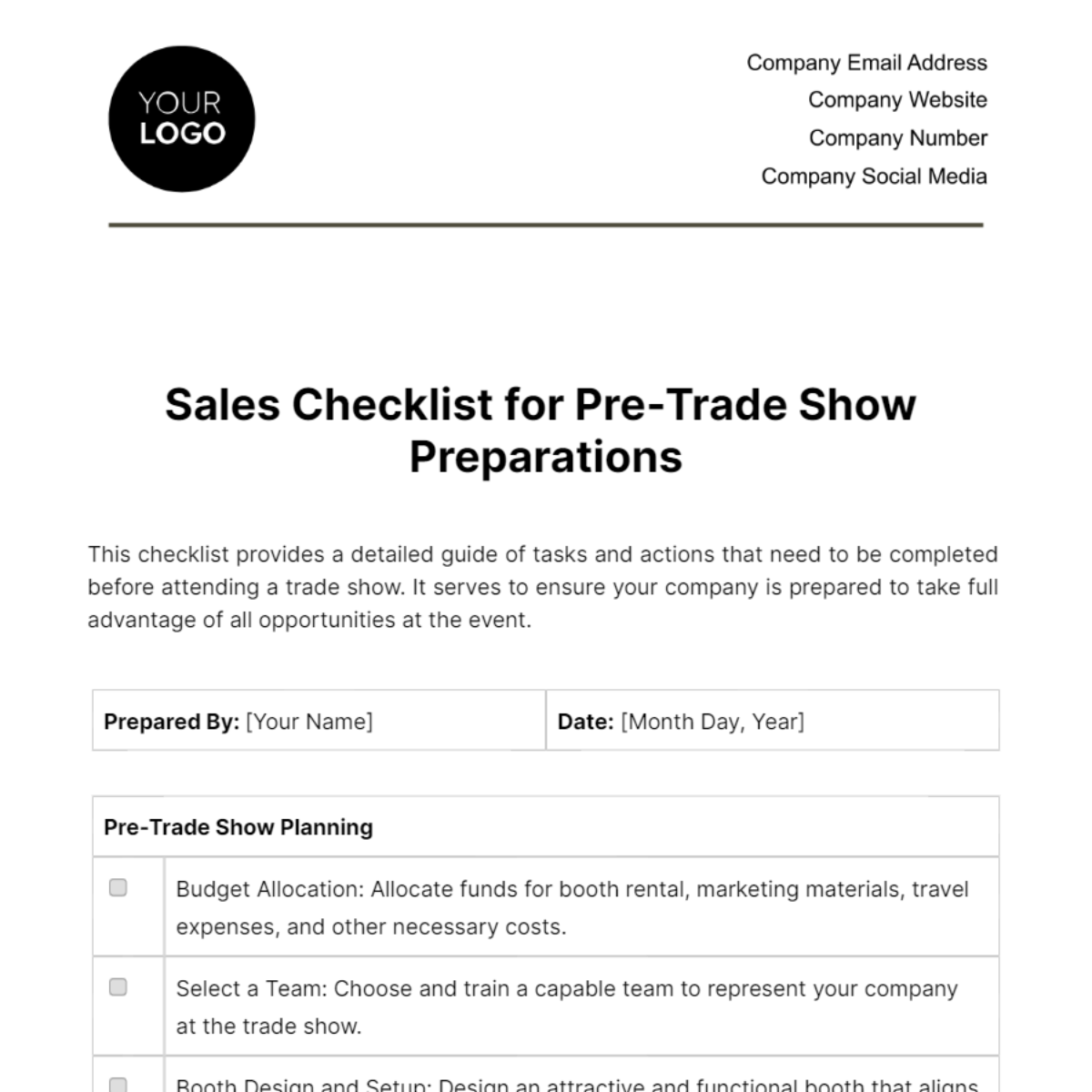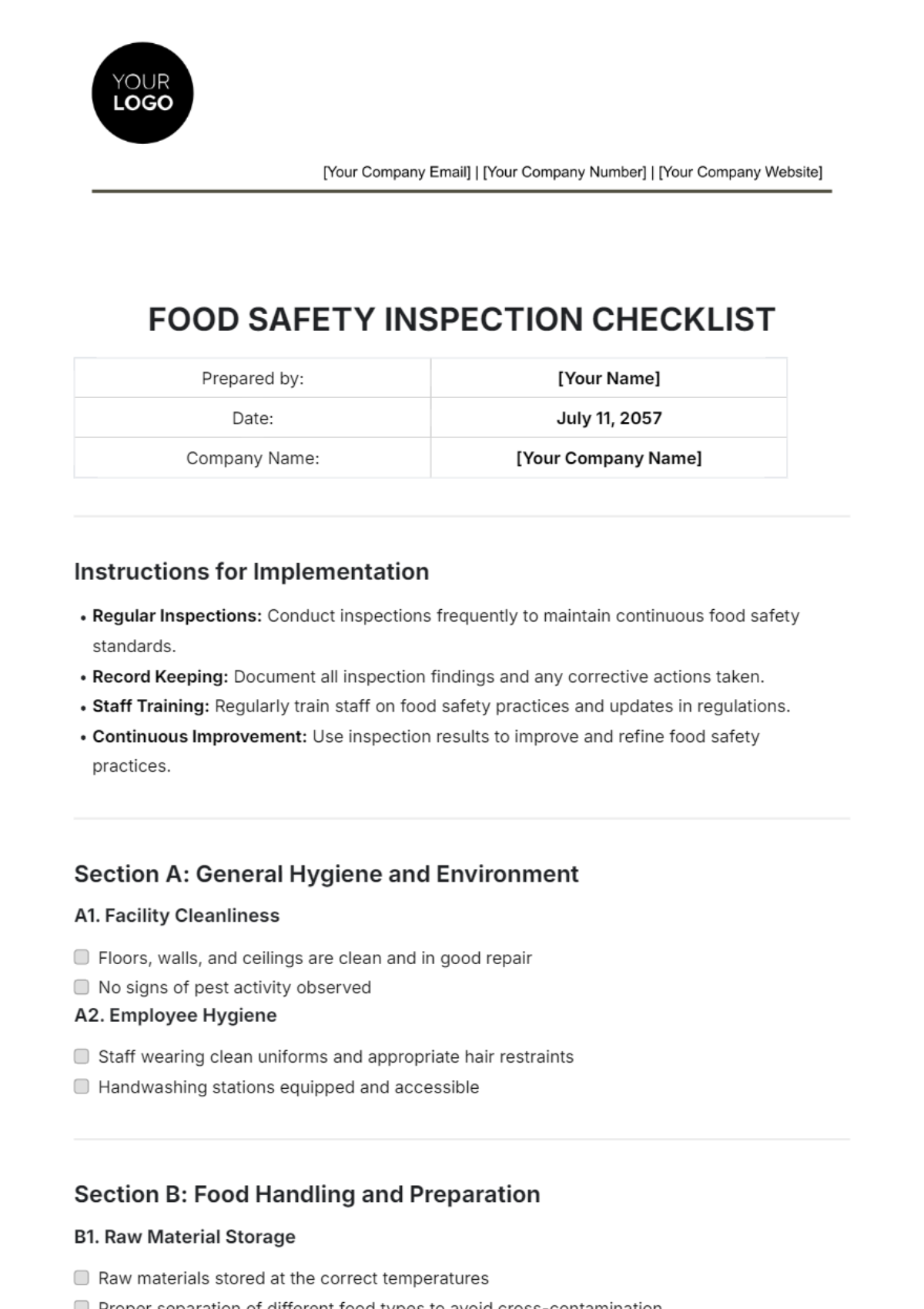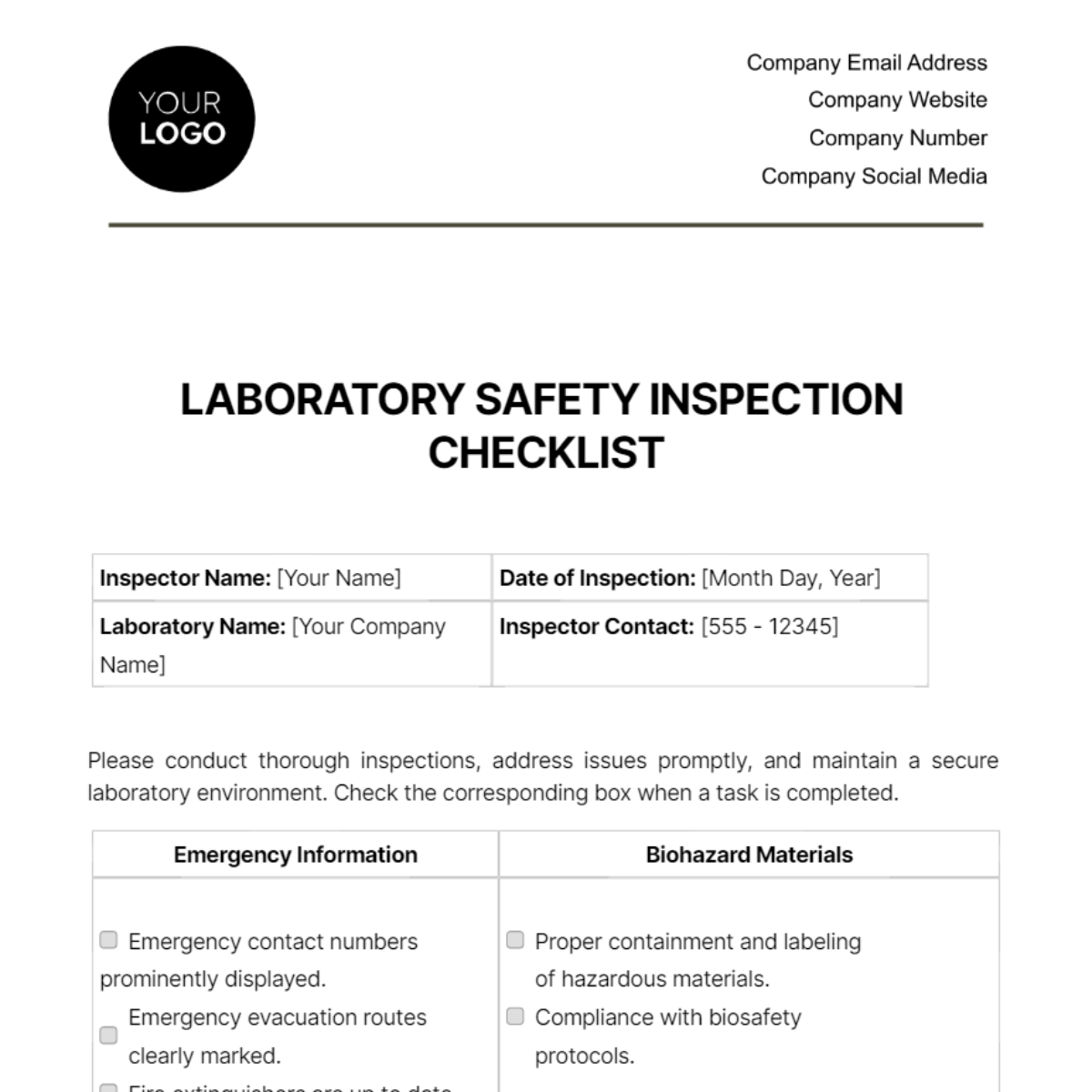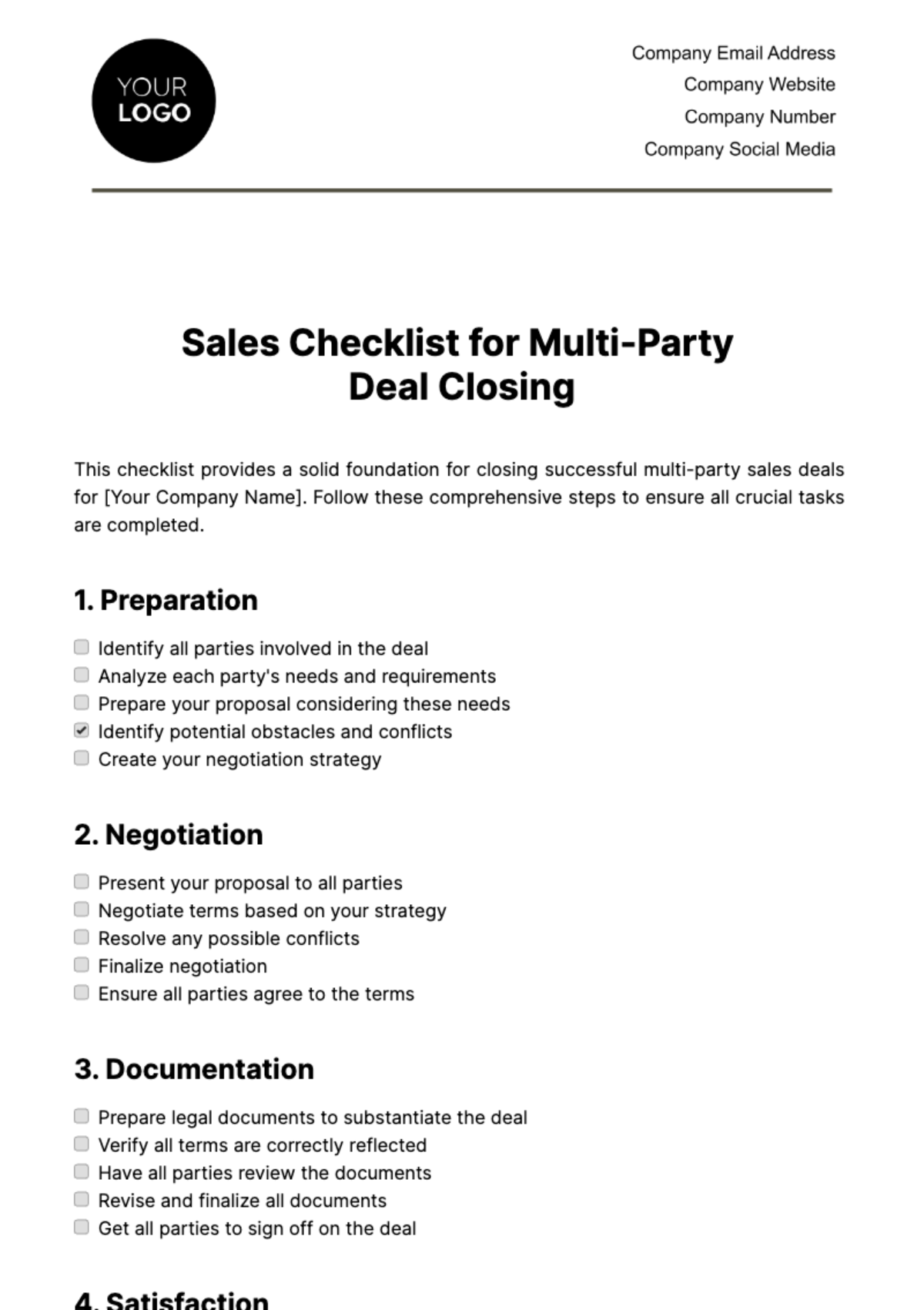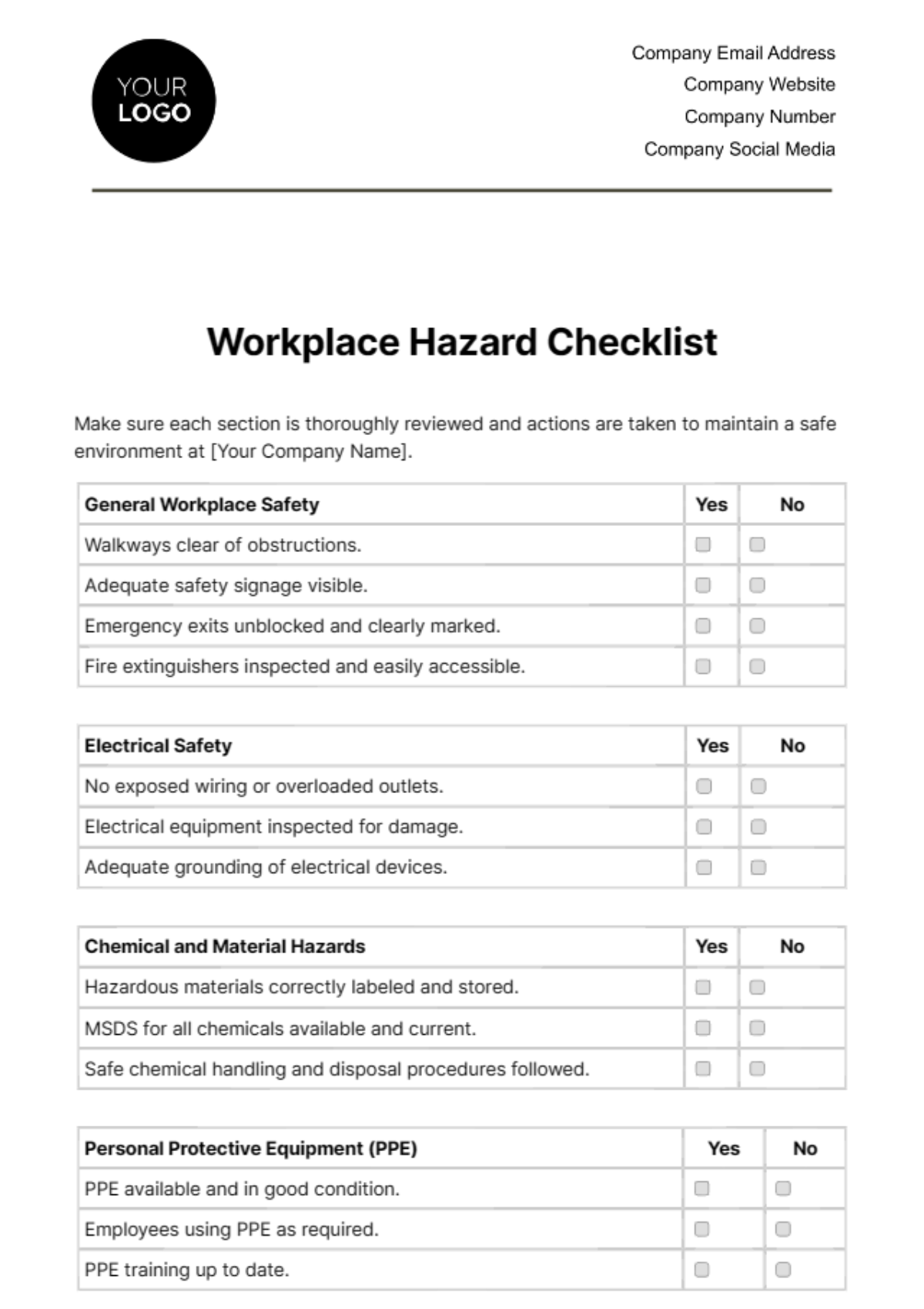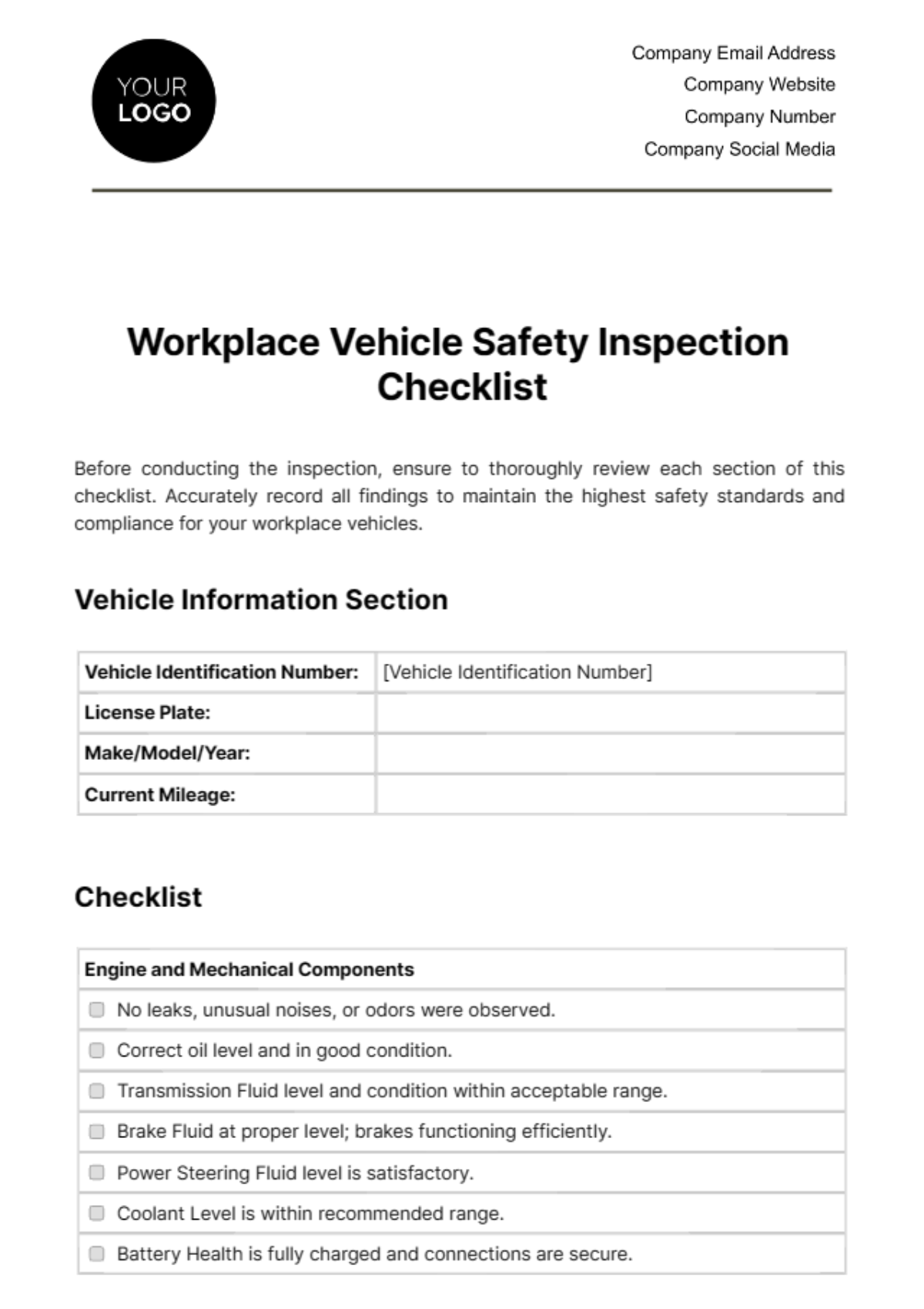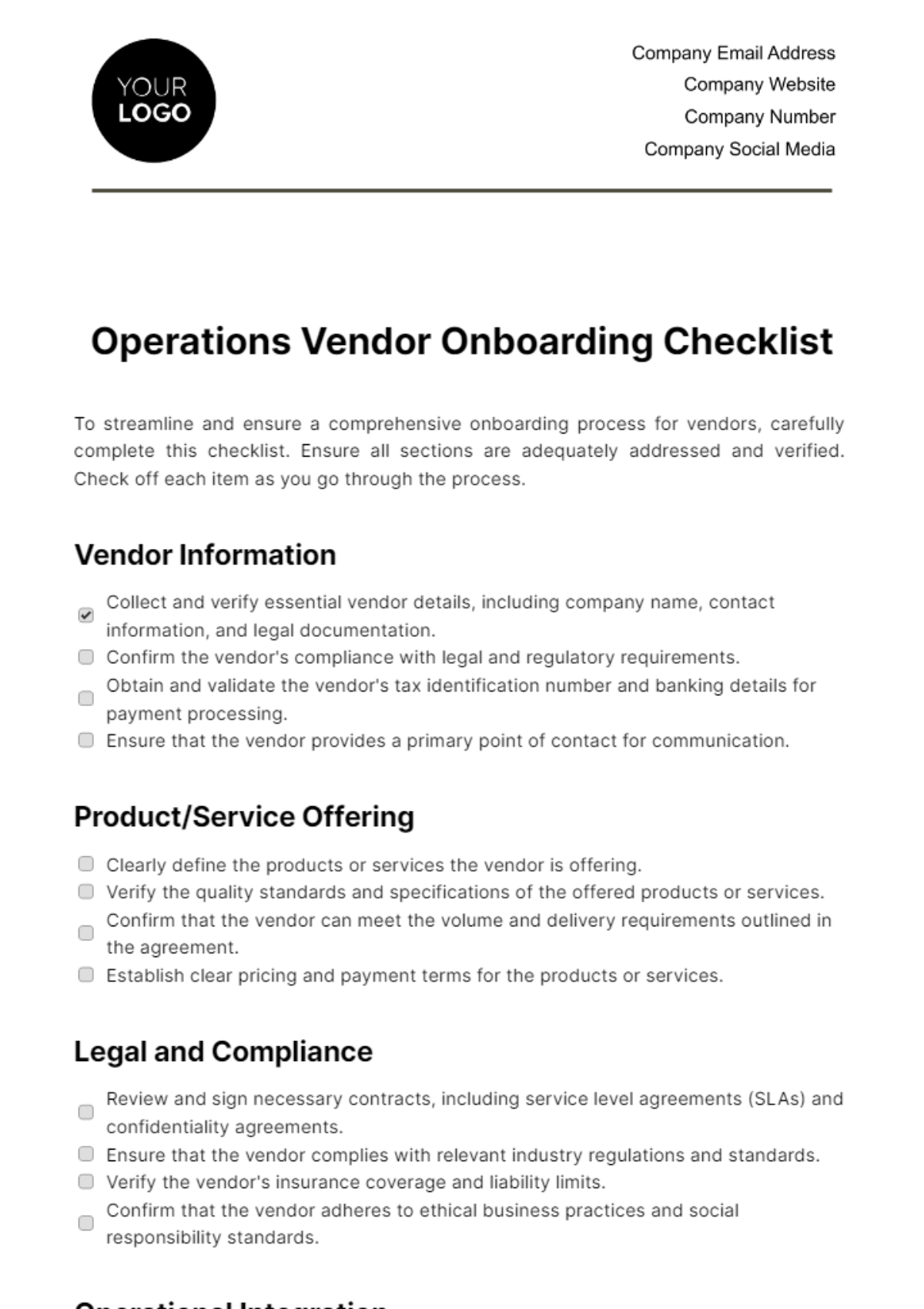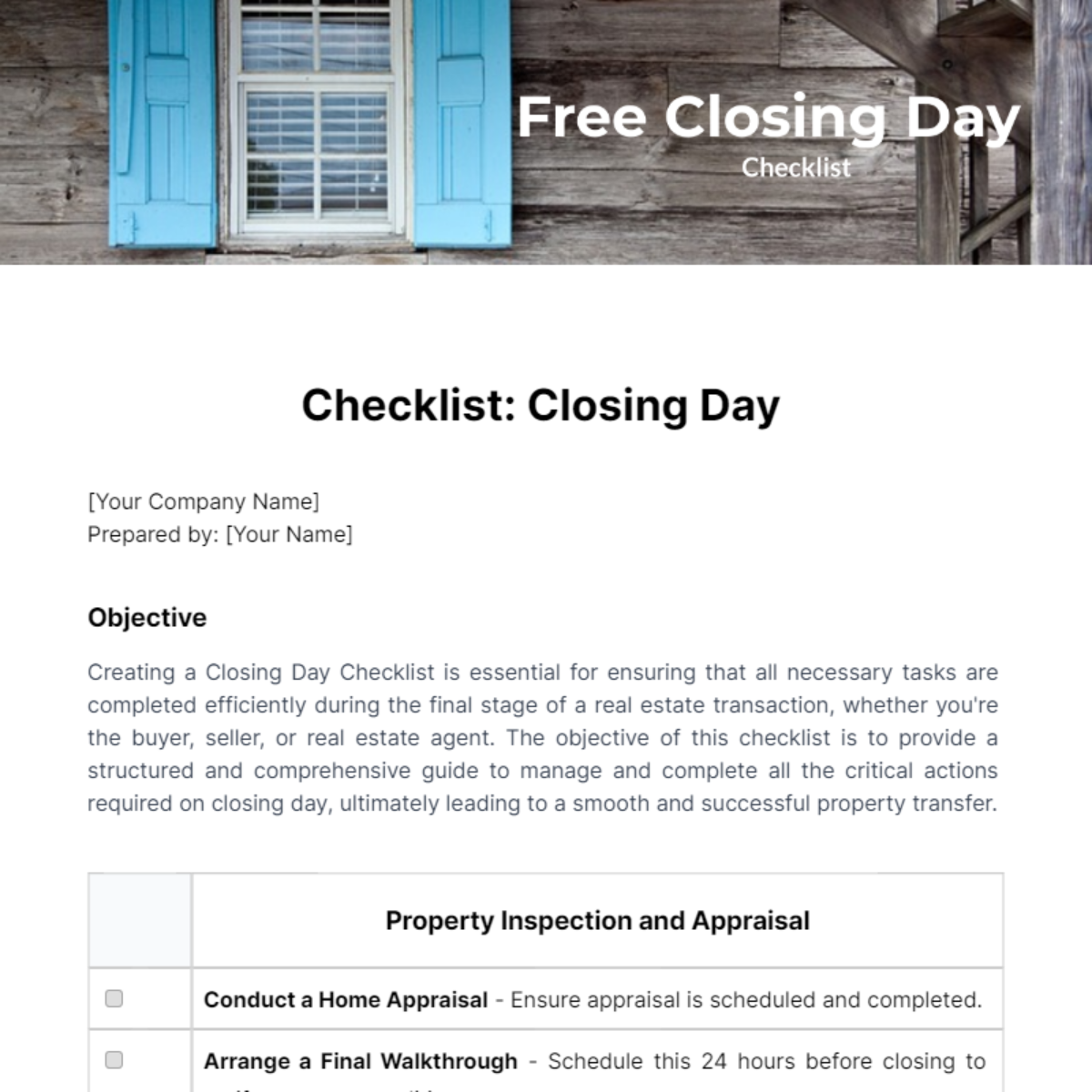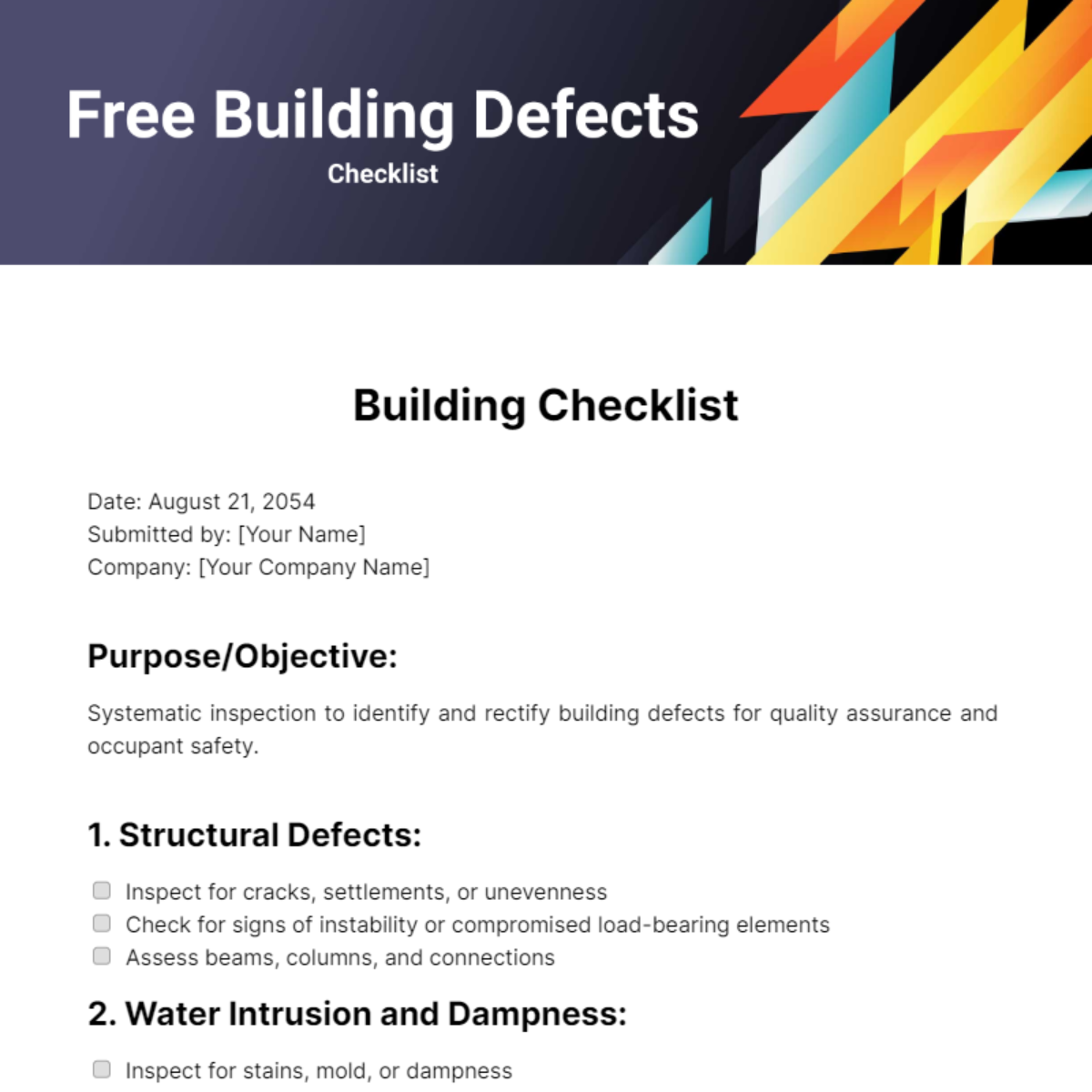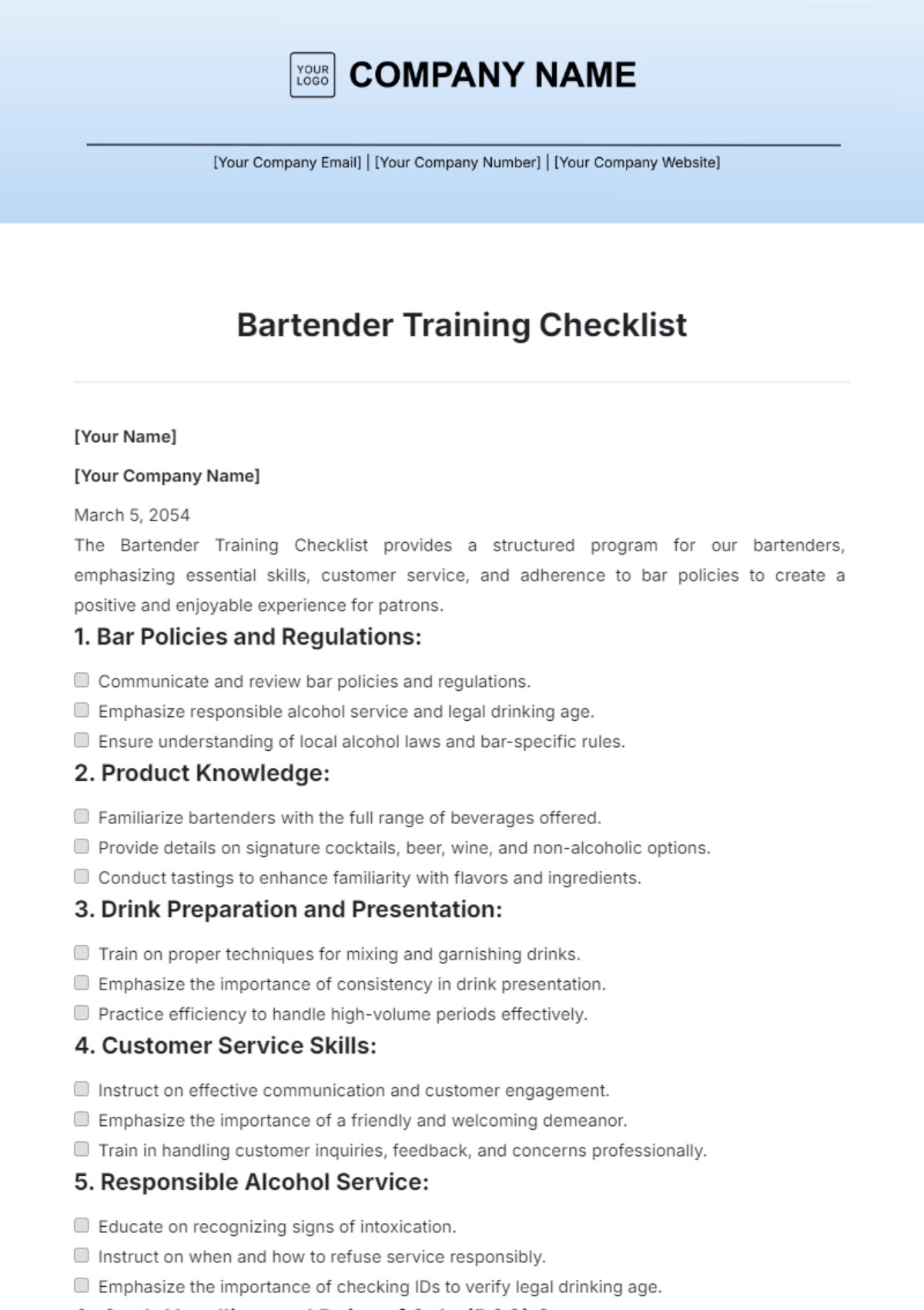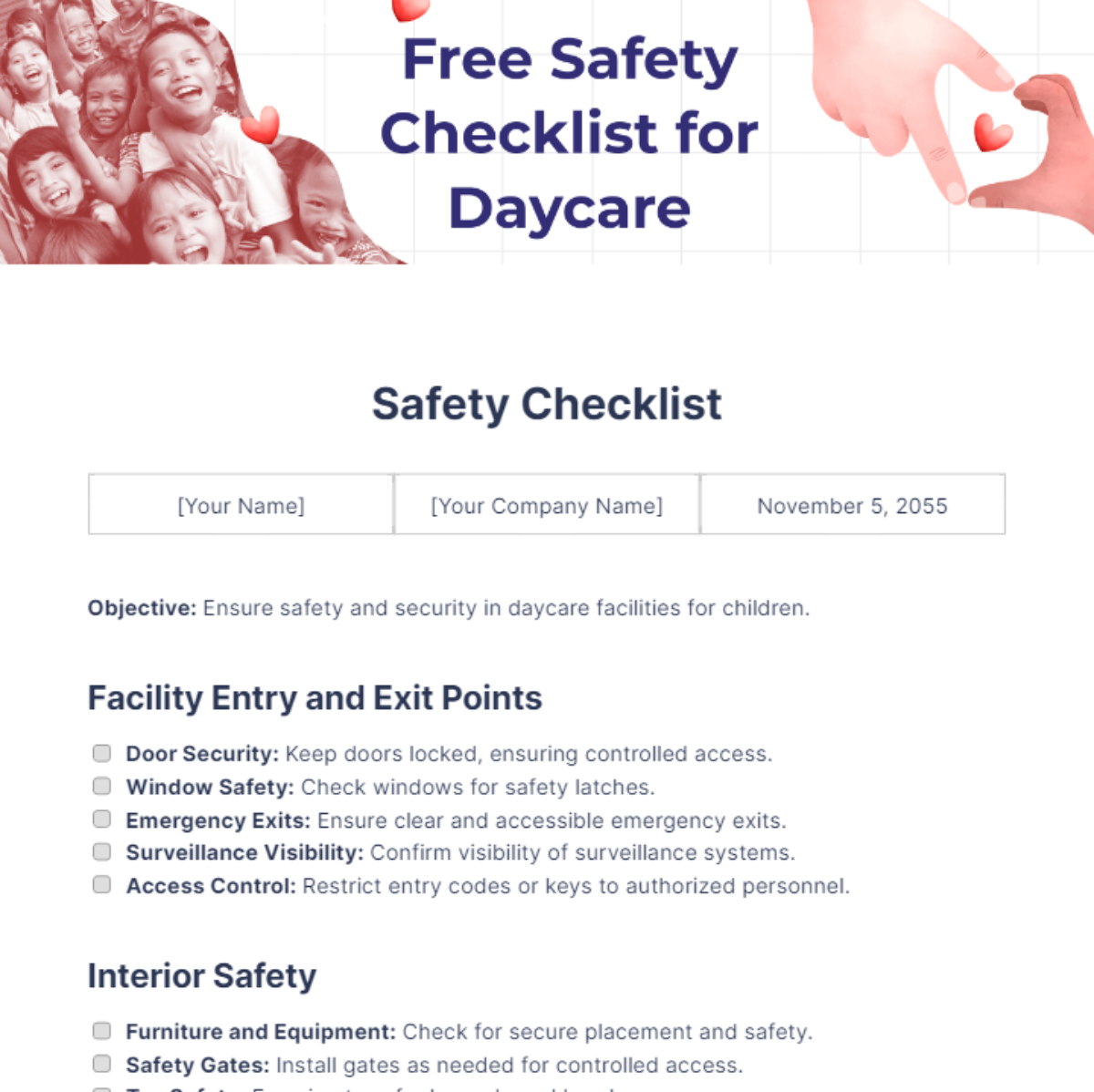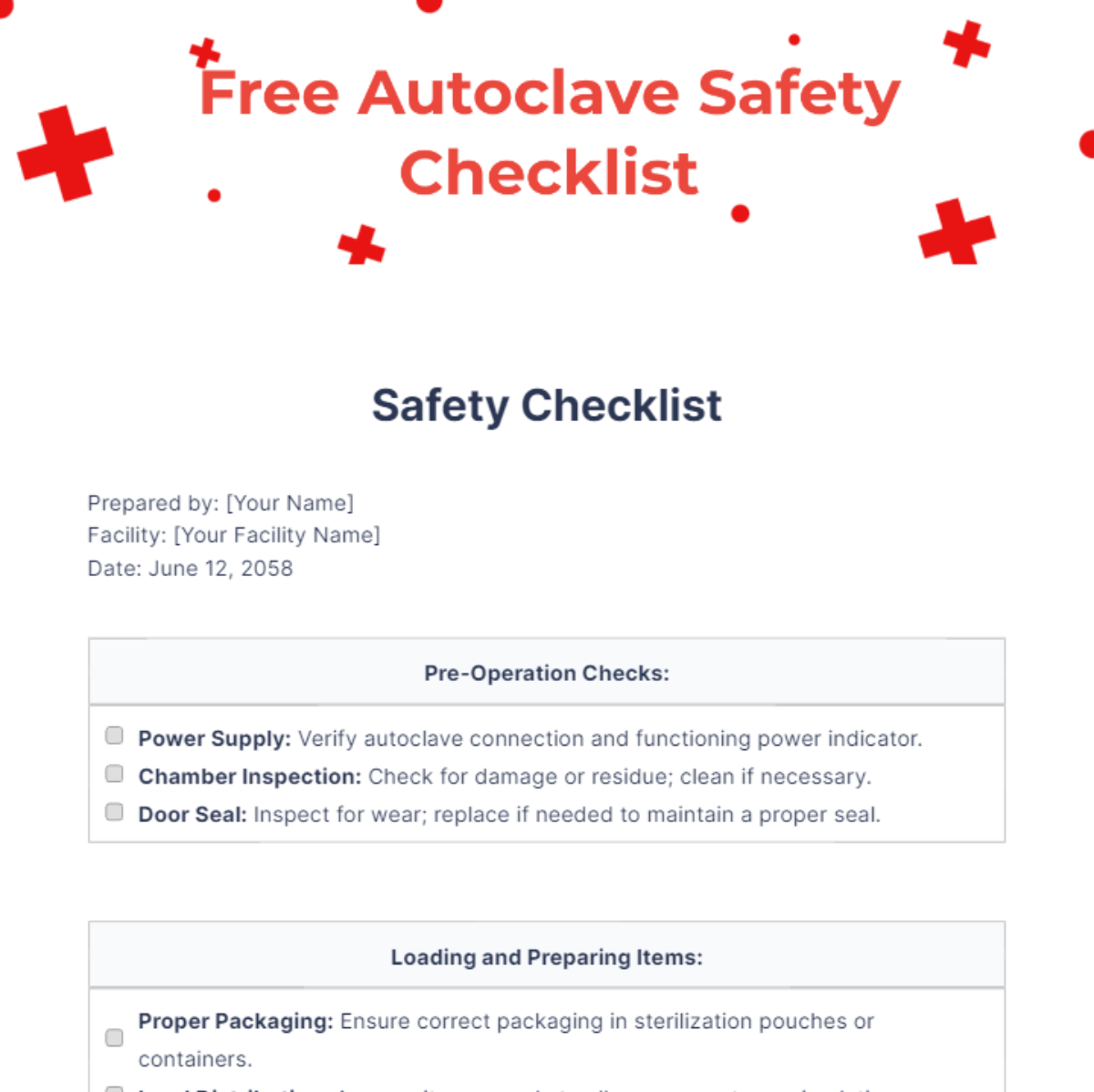Safety Training Design Checklist
[Your Company Name]
[Your Name]
1. Training Objectives
Define Clear Objectives: Establish specific, measurable objectives (e.g., “Participants will be able to identify and respond to three types of workplace hazards”).
Align with Organizational Goals: Ensure objectives align with OSHA regulations, industry standards, and the organization's safety policy.
Identify Target Audience: Analyze demographics and prior knowledge of participants (e.g., new employees, experienced staff, management).
2. Content Development
Research Regulations: Review applicable safety regulations (e.g., OSHA, EPA) and industry-specific standards (e.g., NFPA for fire safety).
Best Practices: Include best practices in safety procedures, hazard identification, and emergency response.
Real-life Case Studies: Incorporate case studies from your organization or industry to illustrate the consequences of unsafe practices.
Accessible Language: Use clear, jargon-free language, and consider translations or simplified versions for non-native speakers.
3. Training Methods
Select Methods: Choose a mix of training methods, such as:
Classroom Training: For theoretical knowledge.
Hands-On Training: For practical skills (e.g., using safety equipment).
E-Learning Modules: For flexible, self-paced learning.
Interactive Activities: Include role-playing scenarios, group discussions, and simulations to reinforce learning.
Skill Assessments: Implement hands-on assessments to evaluate practical skills (e.g., using fire extinguishers).
4. Materials and Resources
Prepare Training Materials: Develop comprehensive materials, such as:
Handouts: Summaries of key points, safety checklists, and procedures.
Presentation Slides: Visual aids to enhance understanding.
Videos: Safety demonstration videos relevant to your industry.
Up-to-Date Content: Regularly review and update materials to reflect current regulations and safety technologies.
Equipment Availability: Ensure all necessary equipment is available (e.g., personal protective equipment (PPE), fire extinguishers for practice).
5. Training Schedule
Develop Timeline: Create a detailed training schedule with specific dates, durations, and locations.
Convenient Timing: Schedule training sessions during work hours or shift changes to maximize attendance.
Breaks and Q&A: Plan for short breaks every 60-90 minutes and allocate time for questions.
6. Trainer Qualifications
Knowledgeable Trainers: Ensure trainers have relevant safety experience and knowledge, possibly through certifications (e.g., Certified Safety Professional (CSP)).
Verification: Confirm trainers hold current certifications and have undergone training on adult learning principles.
Clear Agenda: Provide trainers with a detailed agenda and expected outcomes for each session.
7. Evaluation and Feedback
Pre-Training Assessment: Administer a questionnaire or test to assess prior knowledge and identify gaps.
Post-Training Evaluations: Use surveys or quizzes to evaluate participant understanding and the training's effectiveness (e.g., “Rate your confidence in identifying hazards before and after training”).
Collect Feedback: Encourage participants to provide feedback on content, delivery, and engagement to inform future training sessions.
8. Follow-up and Reinforcement
Refresher Courses: Schedule periodic refresher courses (e.g., every six months) to reinforce training and update on new regulations.
Ongoing Resources: Provide access to resources such as safety manuals, online modules, and newsletters for continuous learning.
Promote Safety Culture: Foster an organizational culture of safety through regular communication (e.g., safety newsletters, bulletin boards with safety tips).
